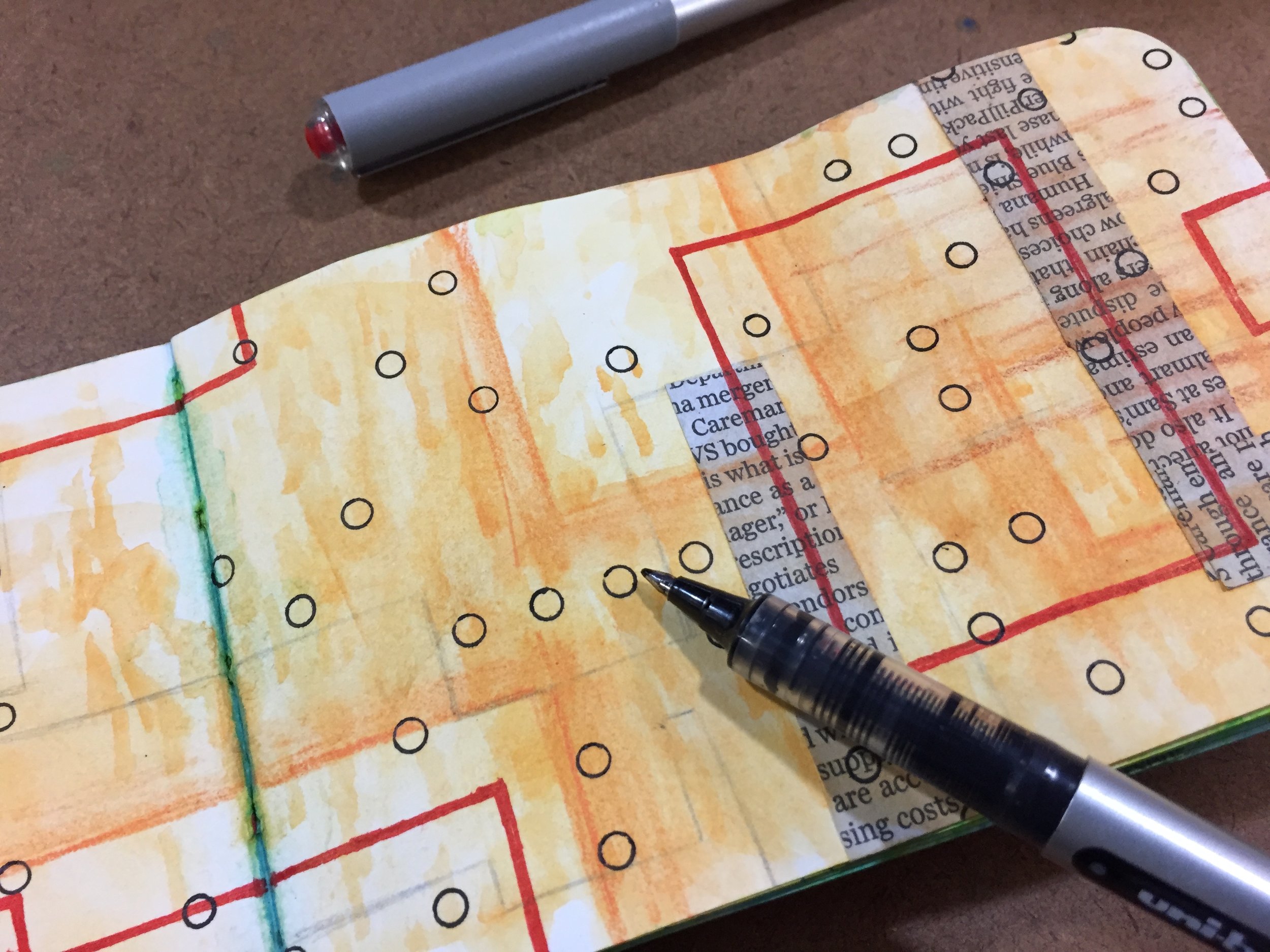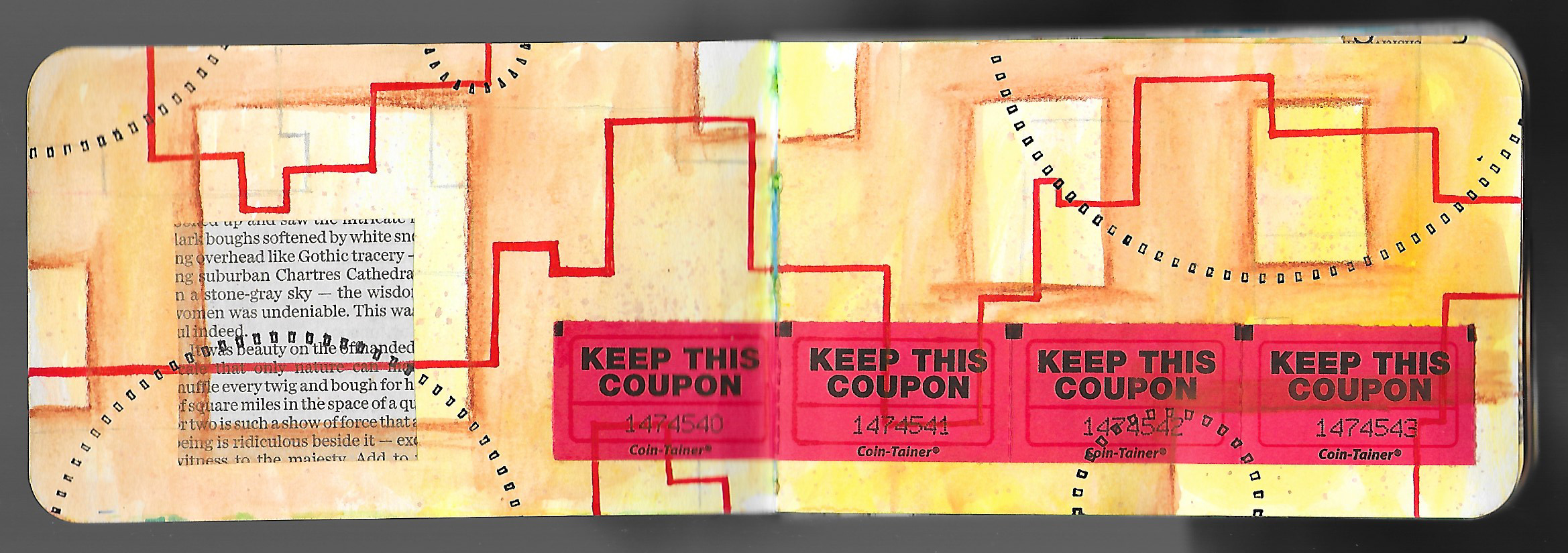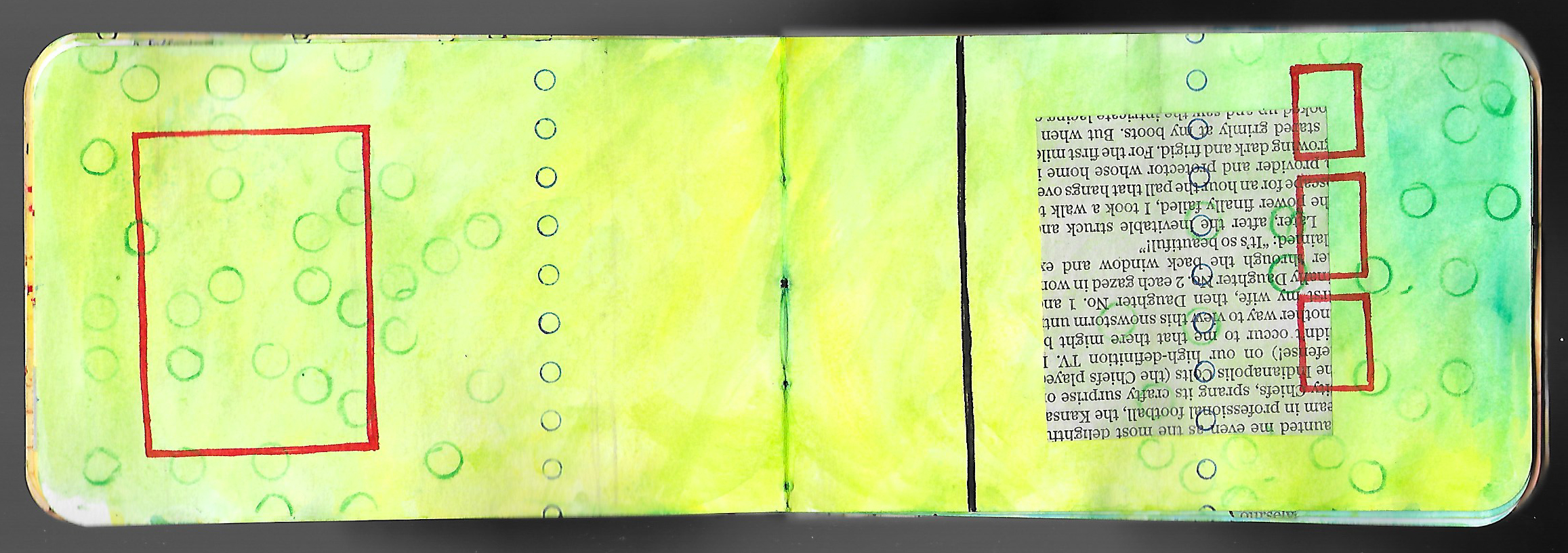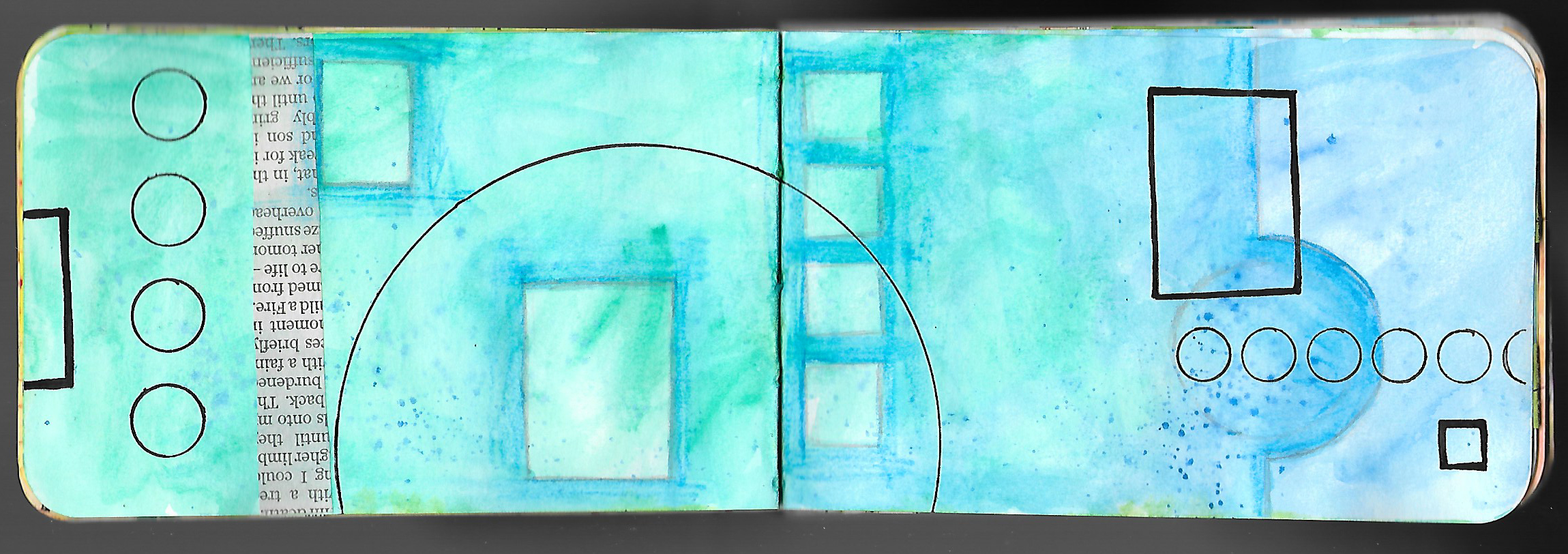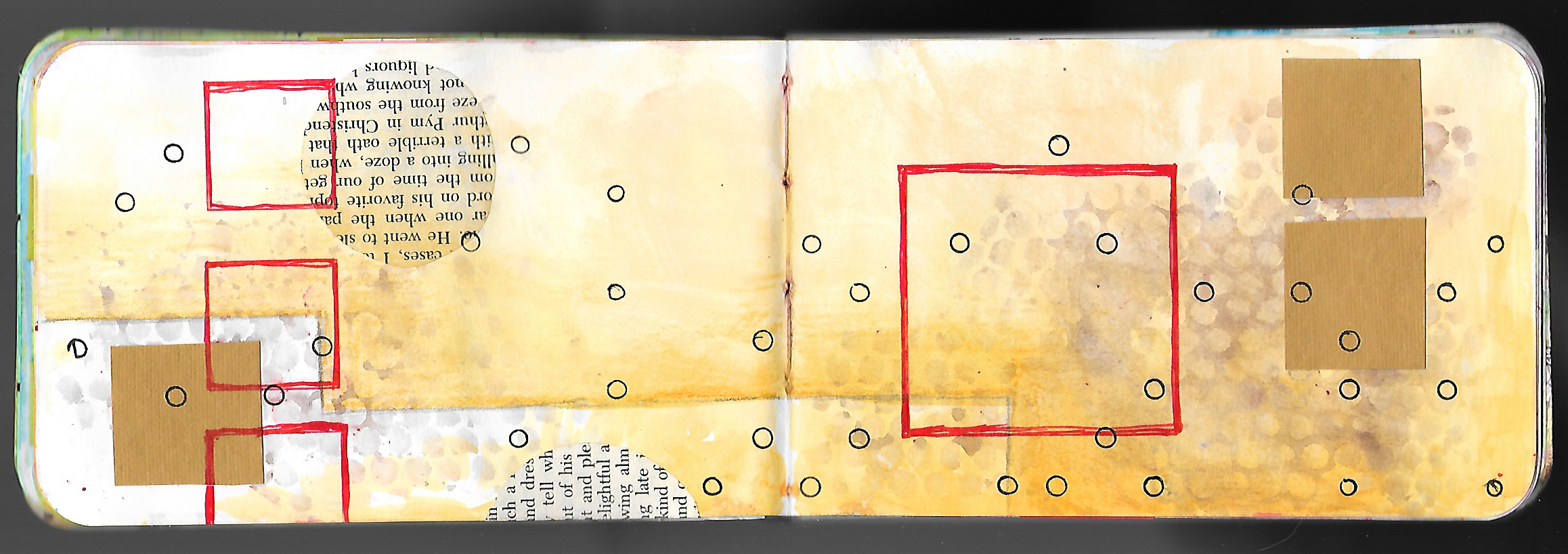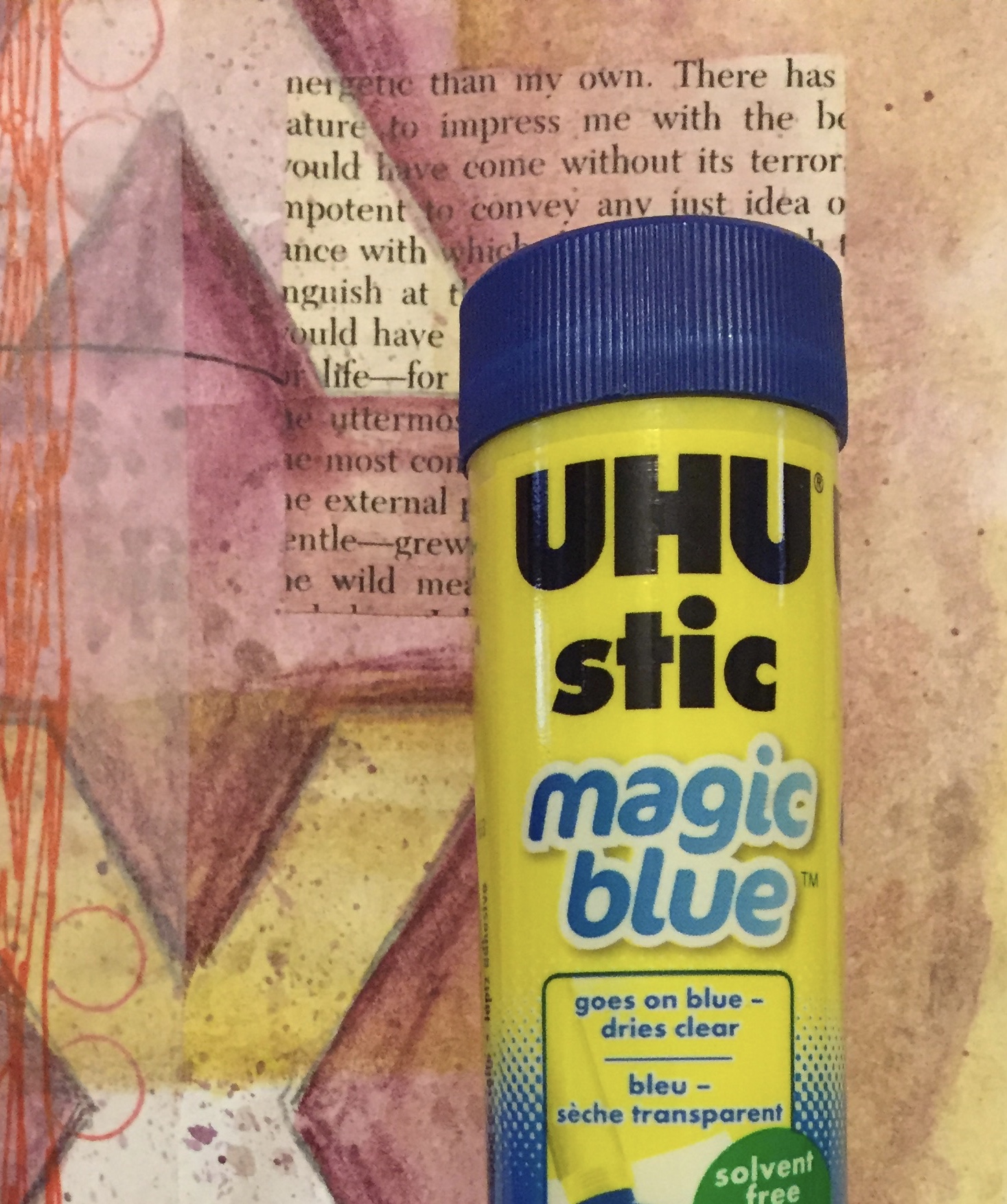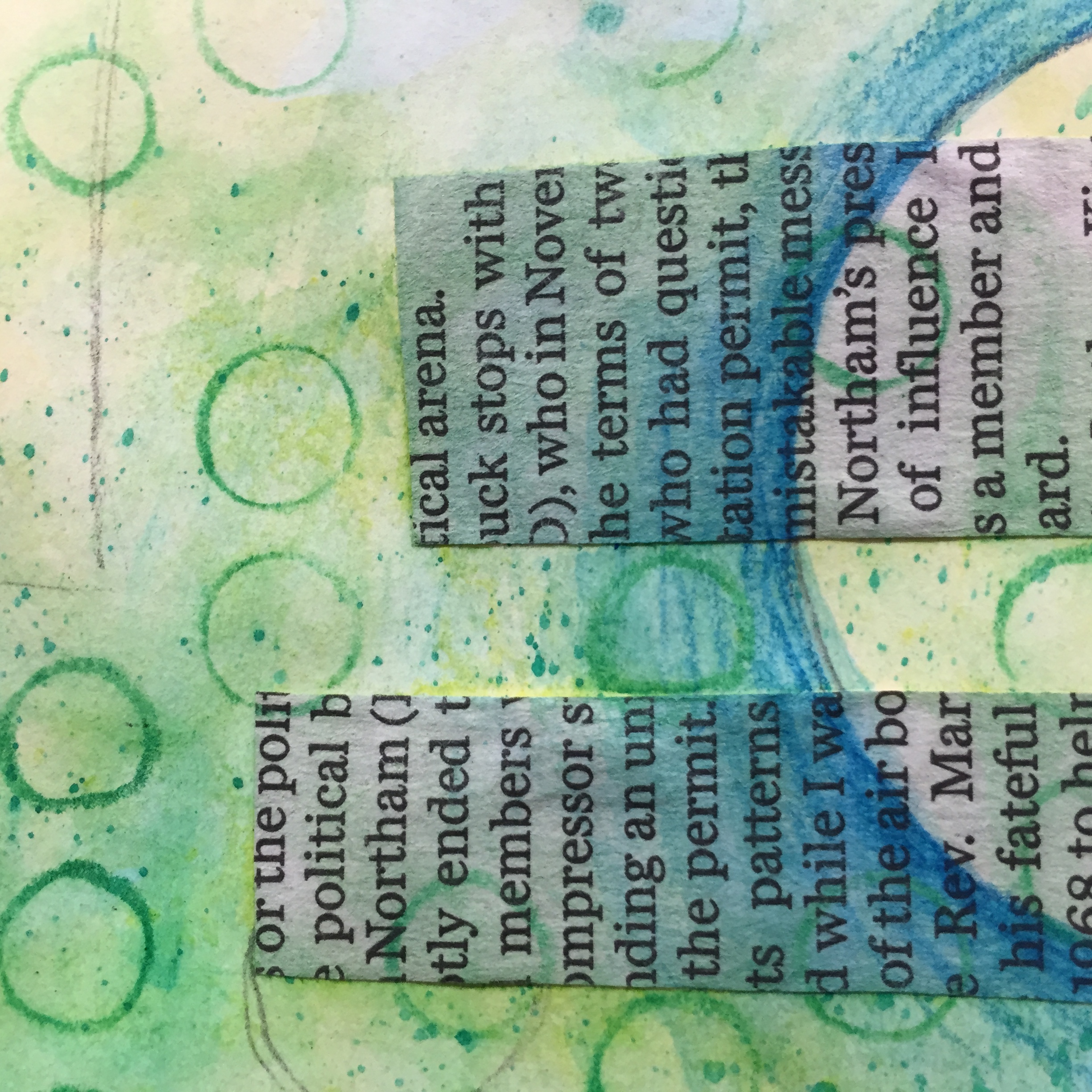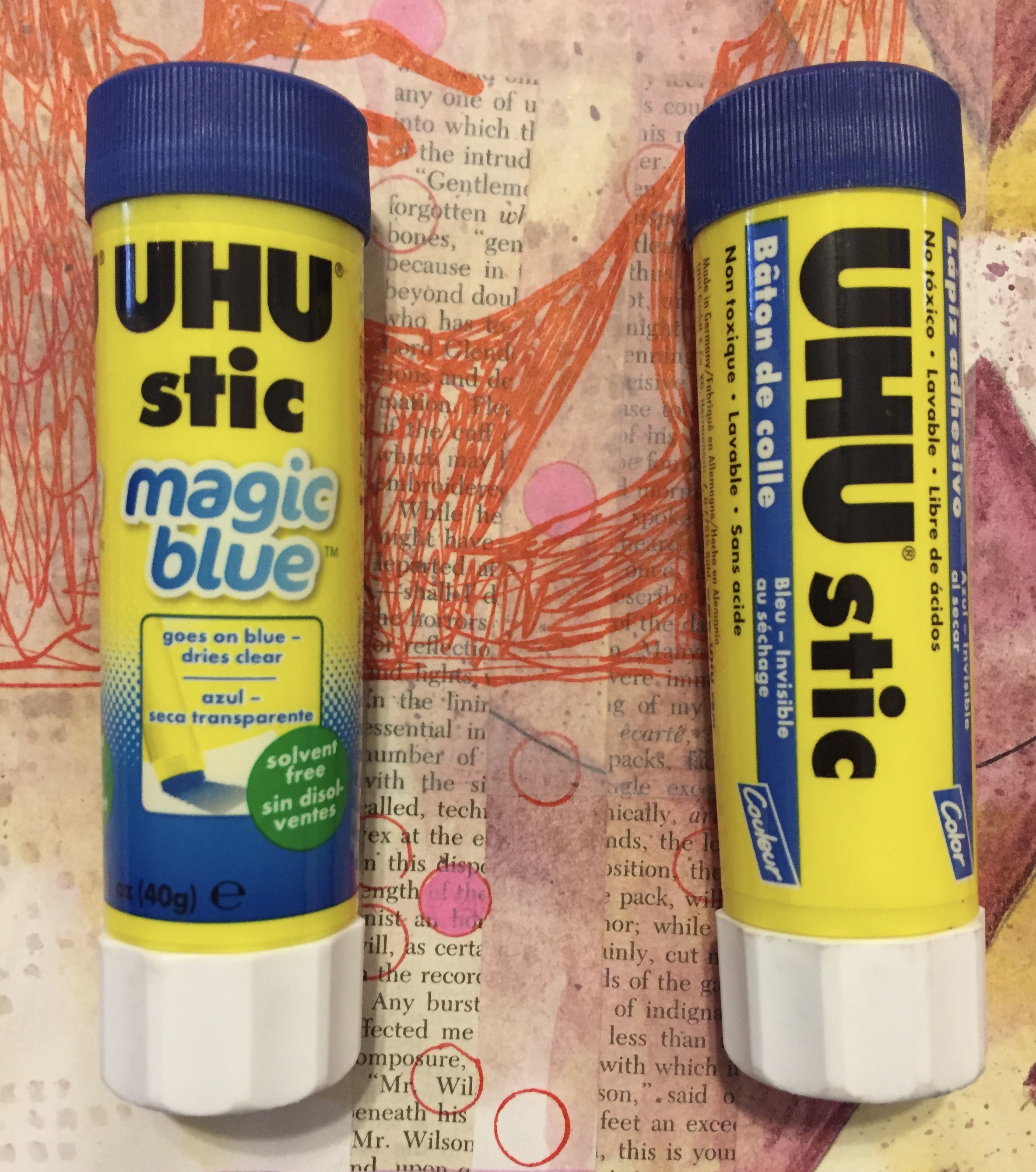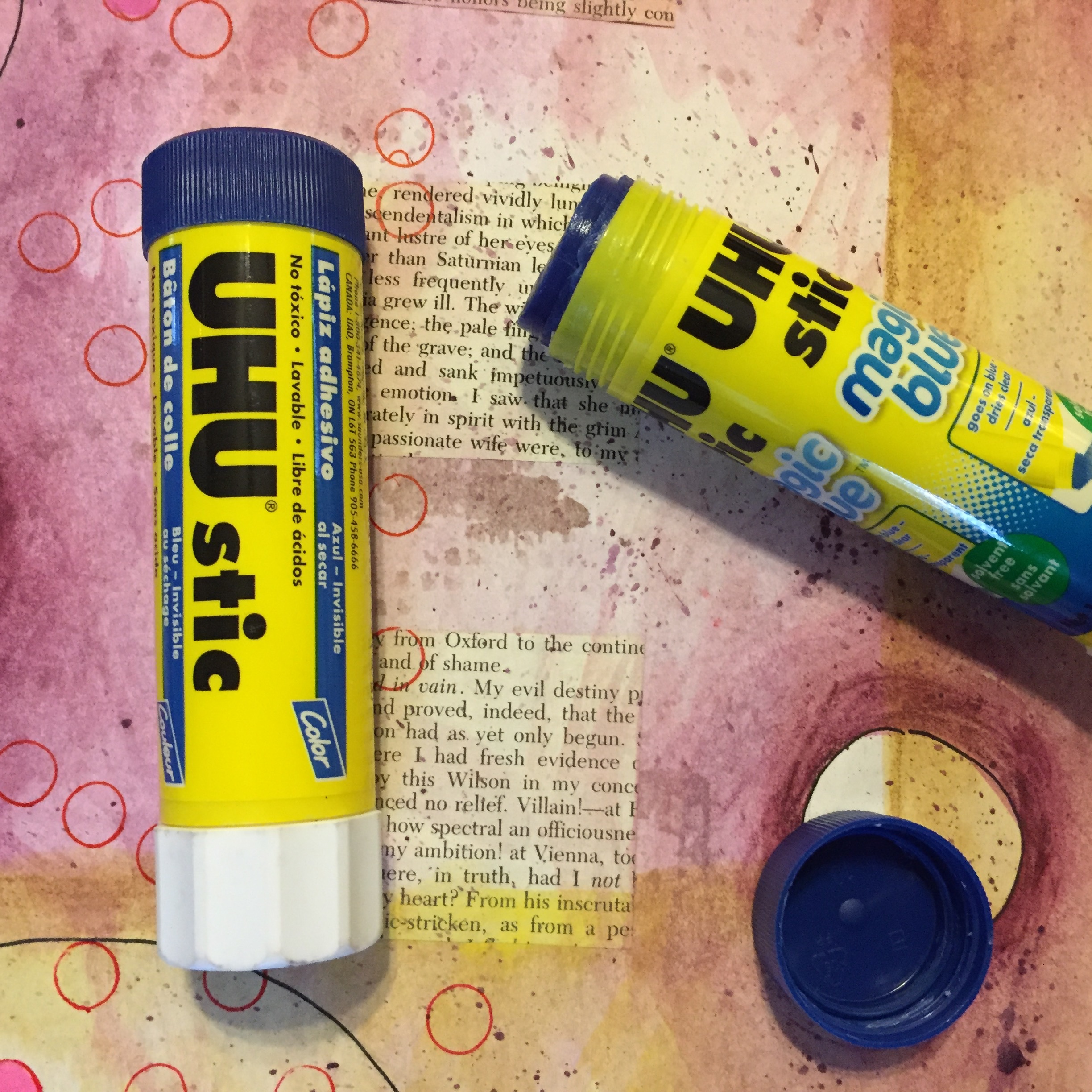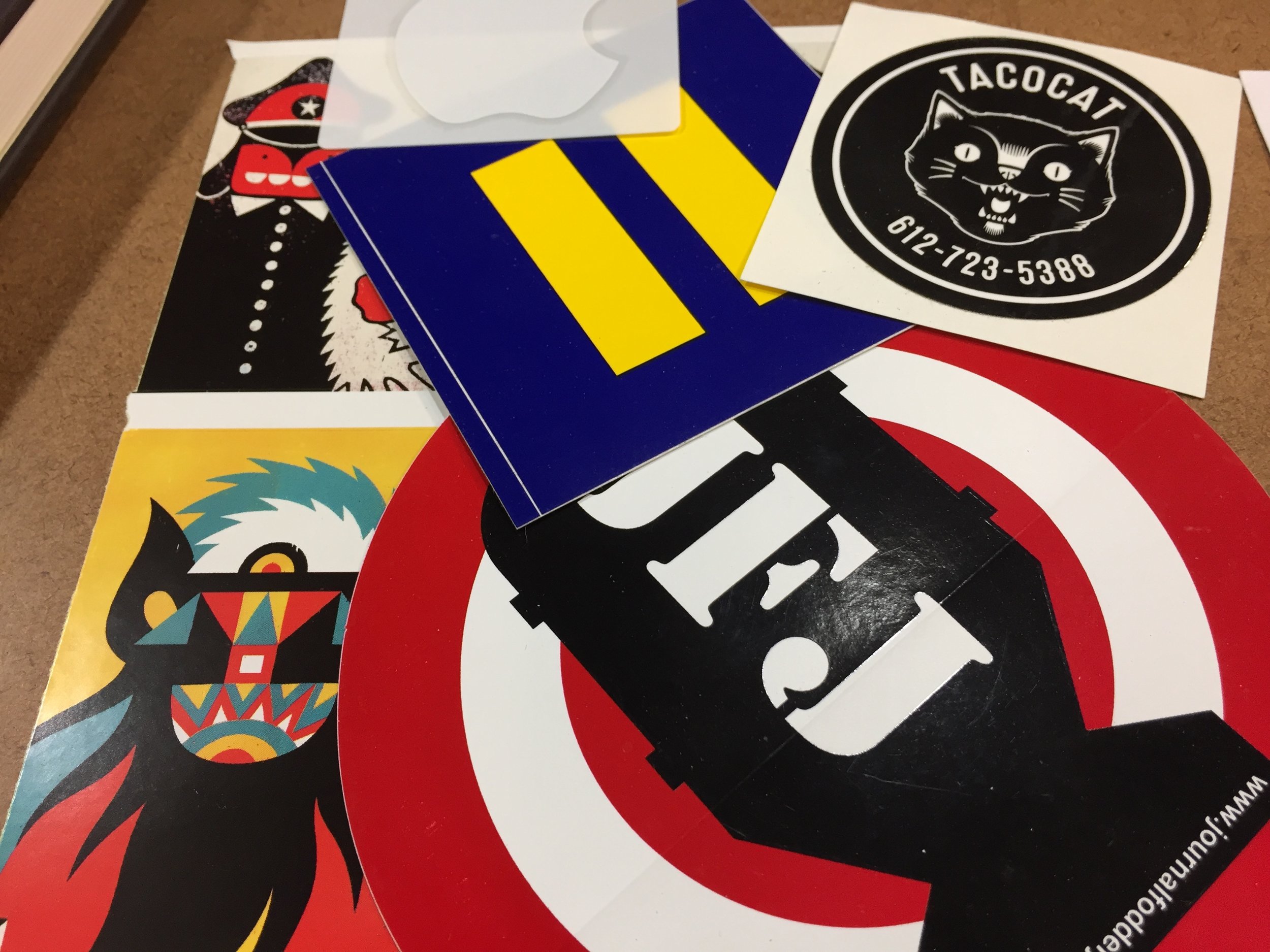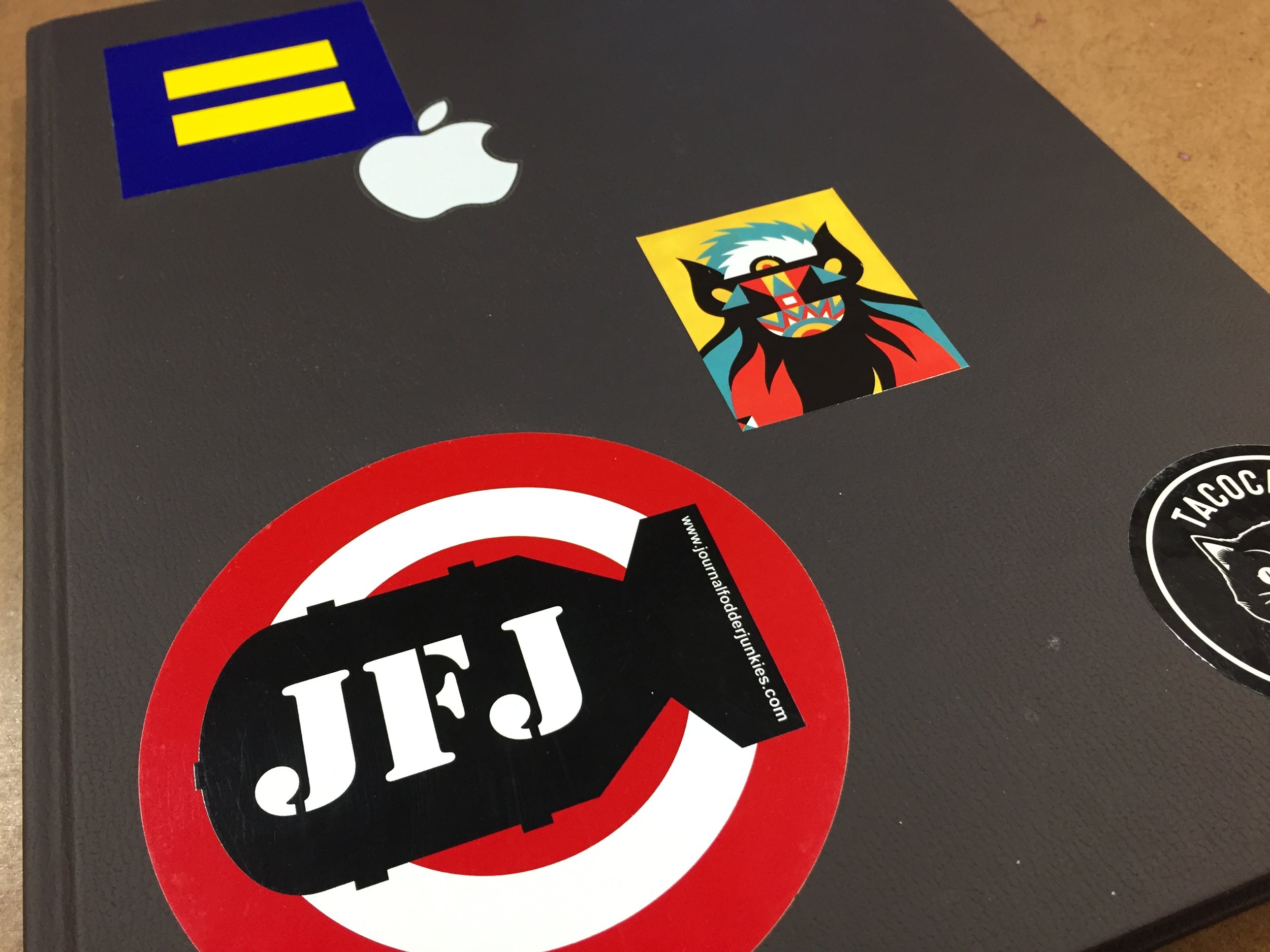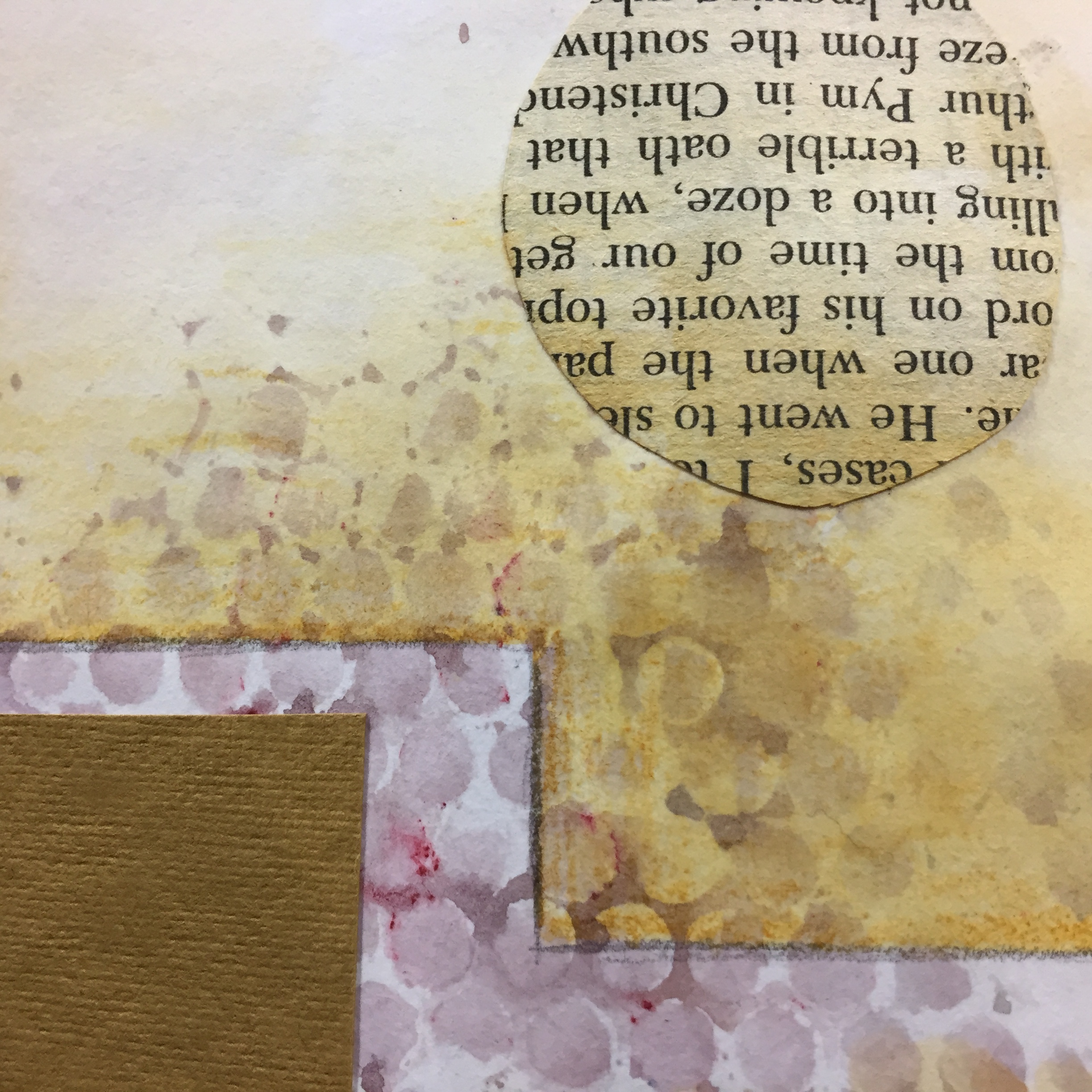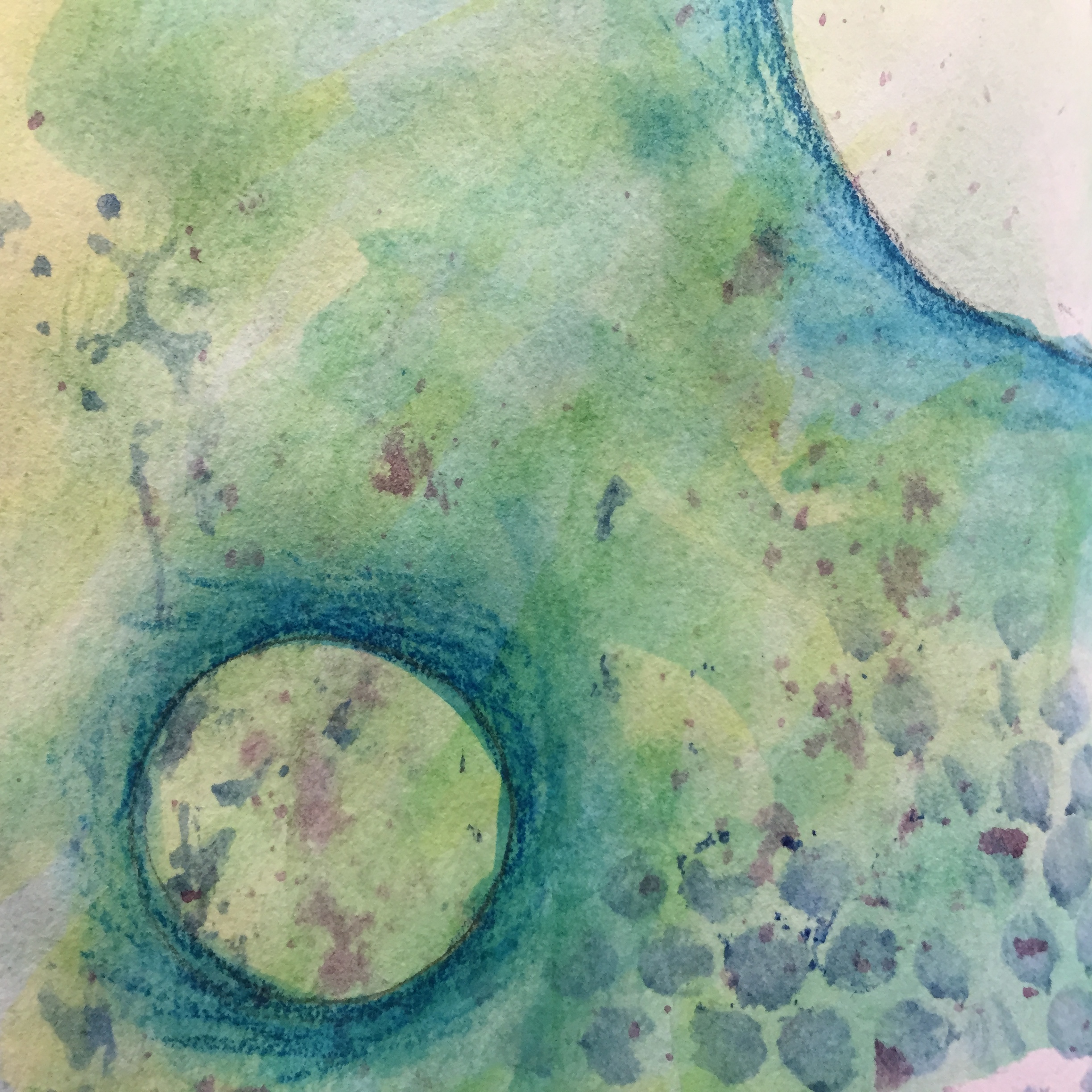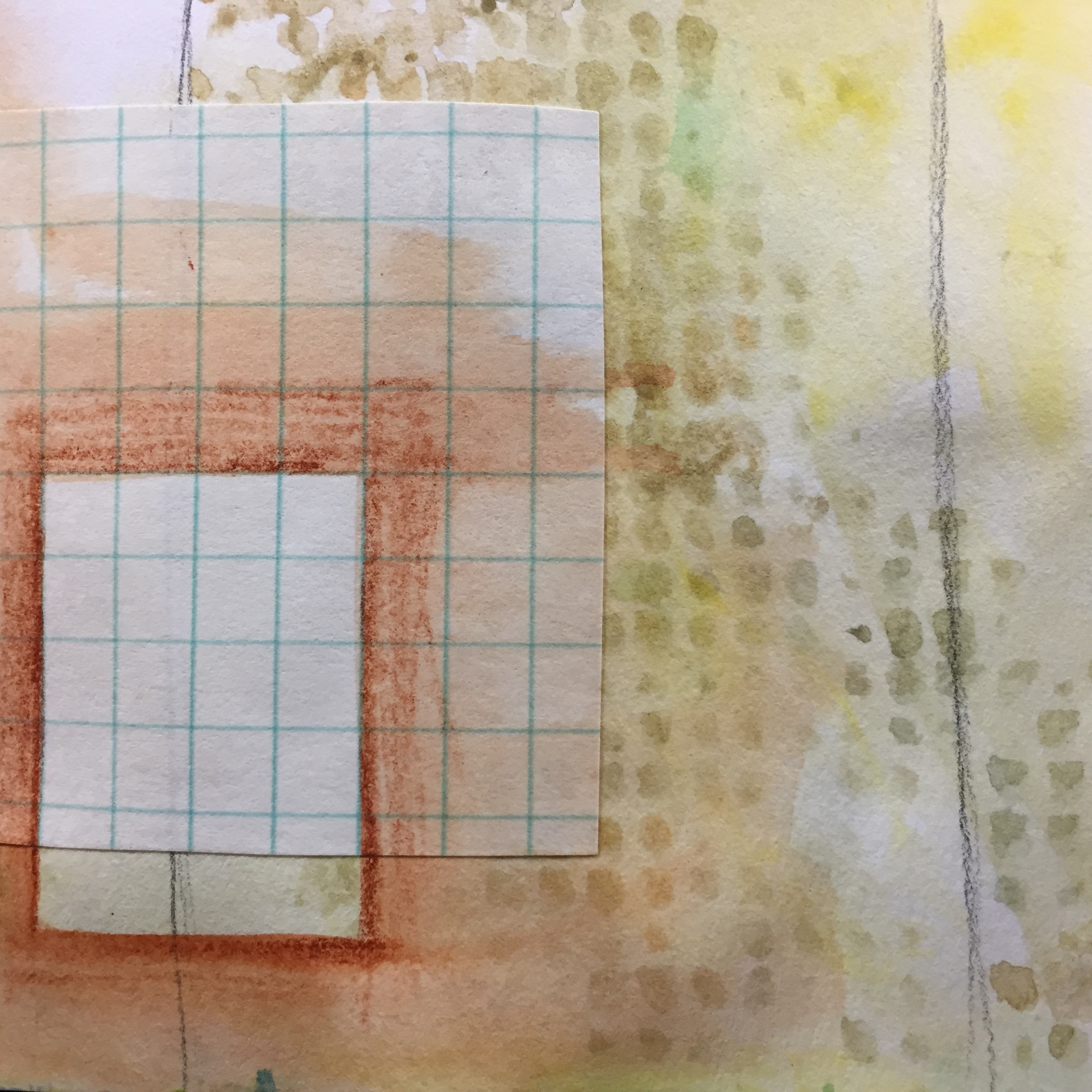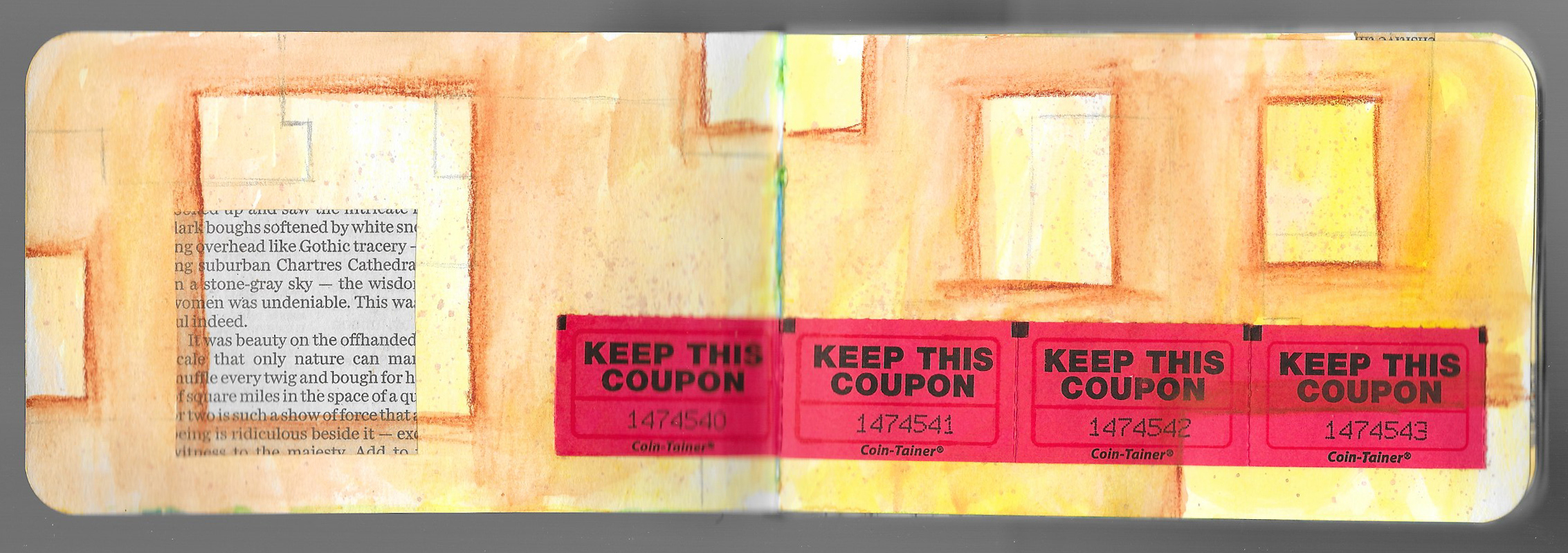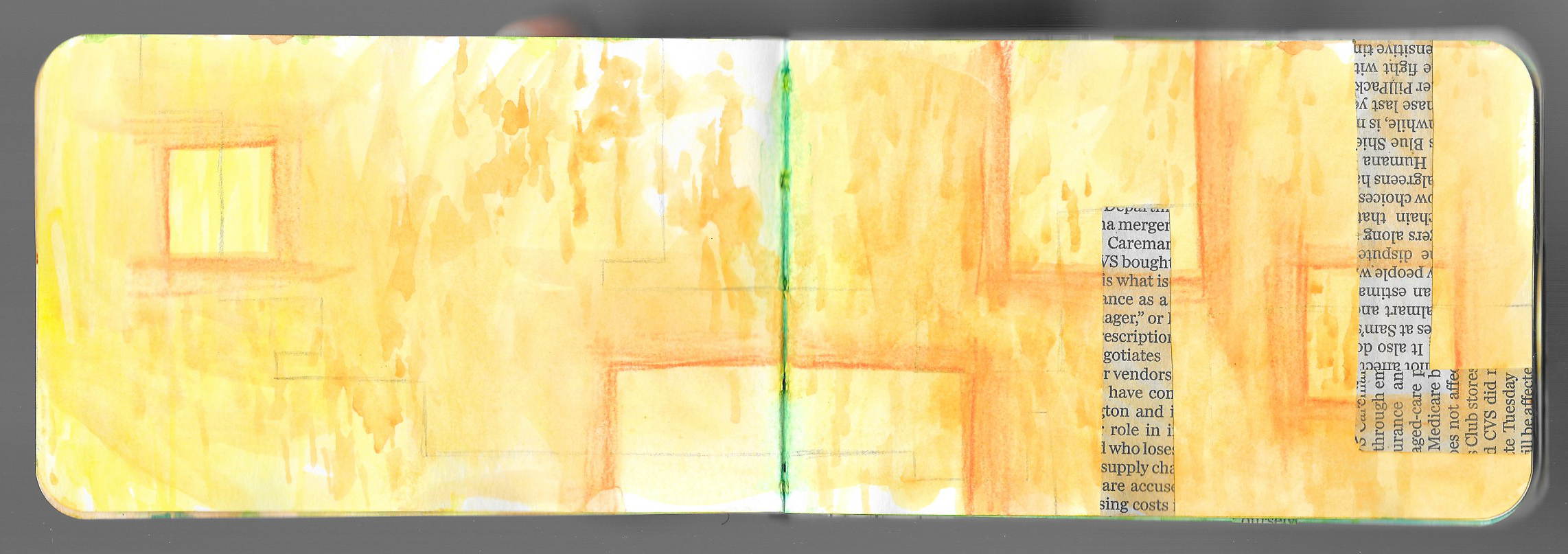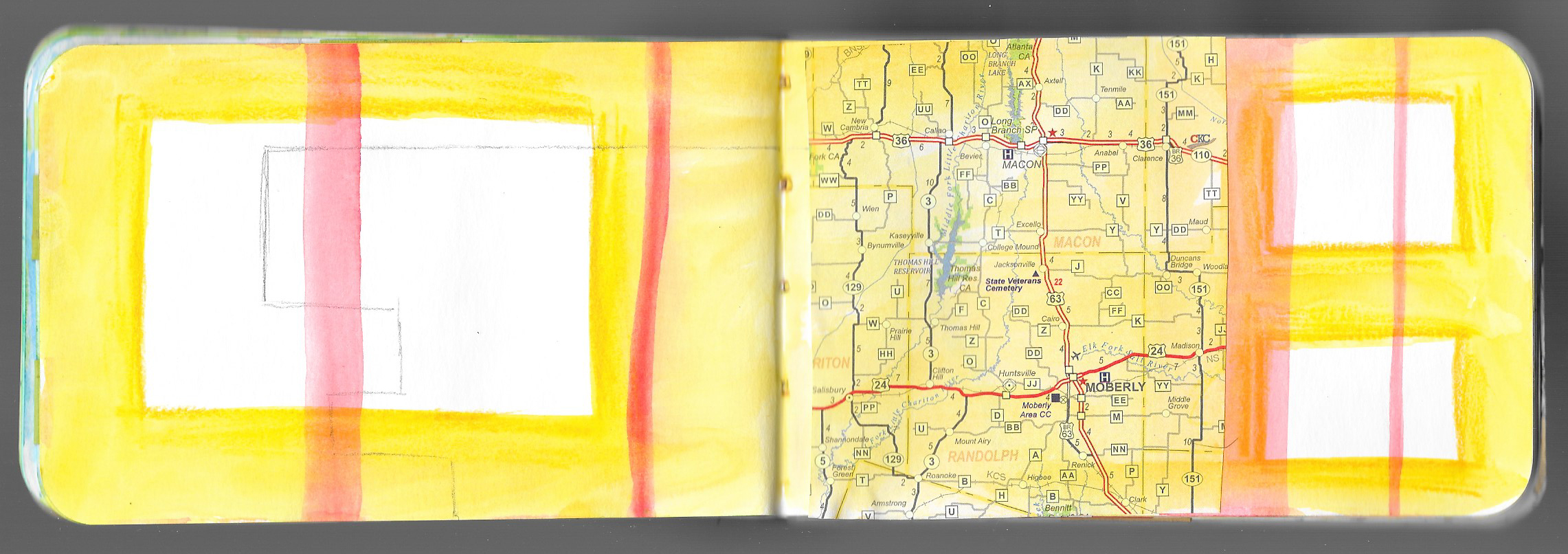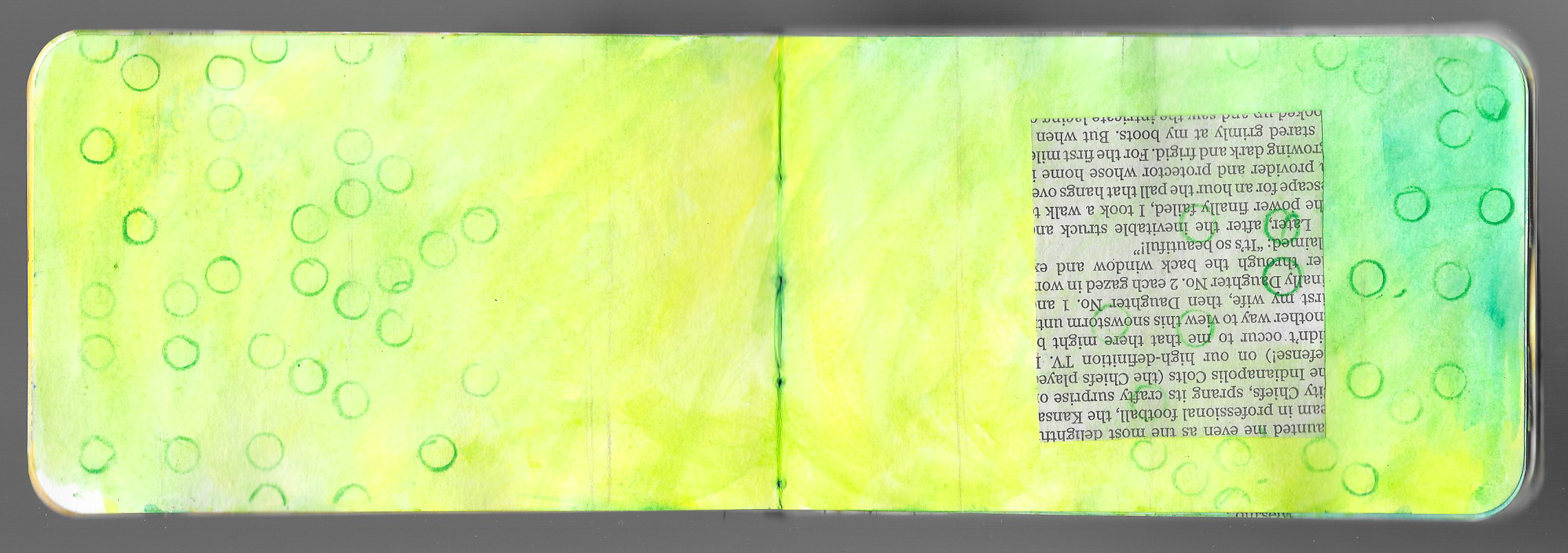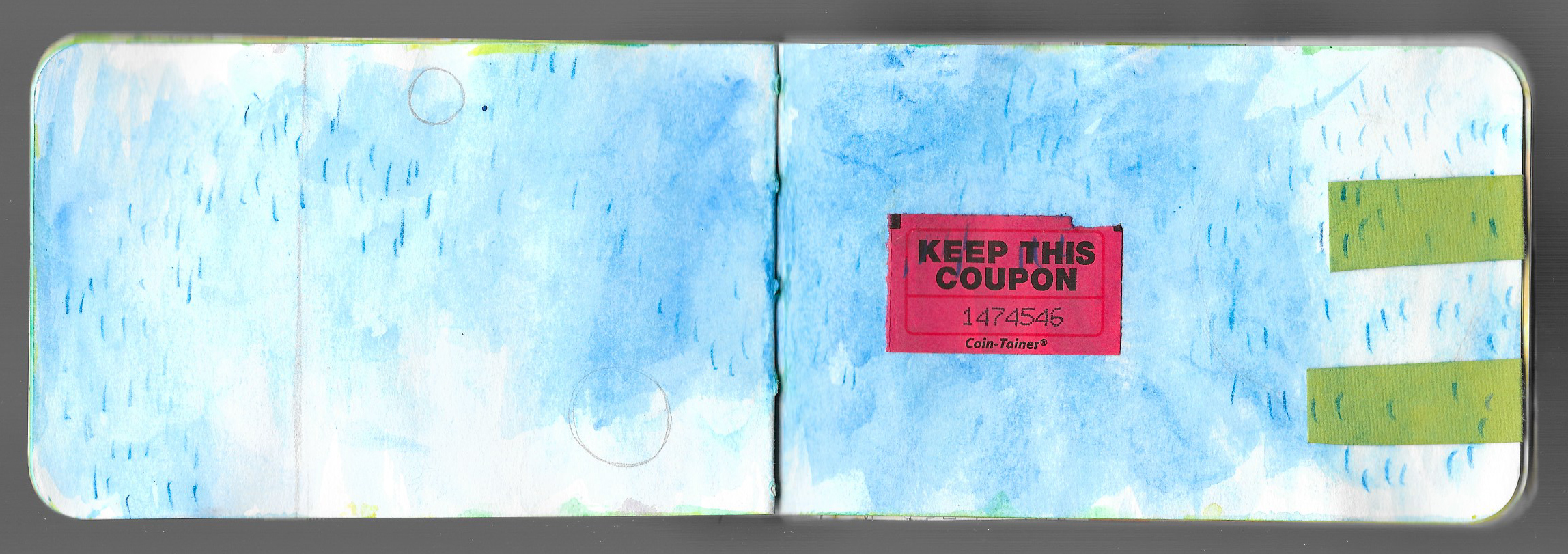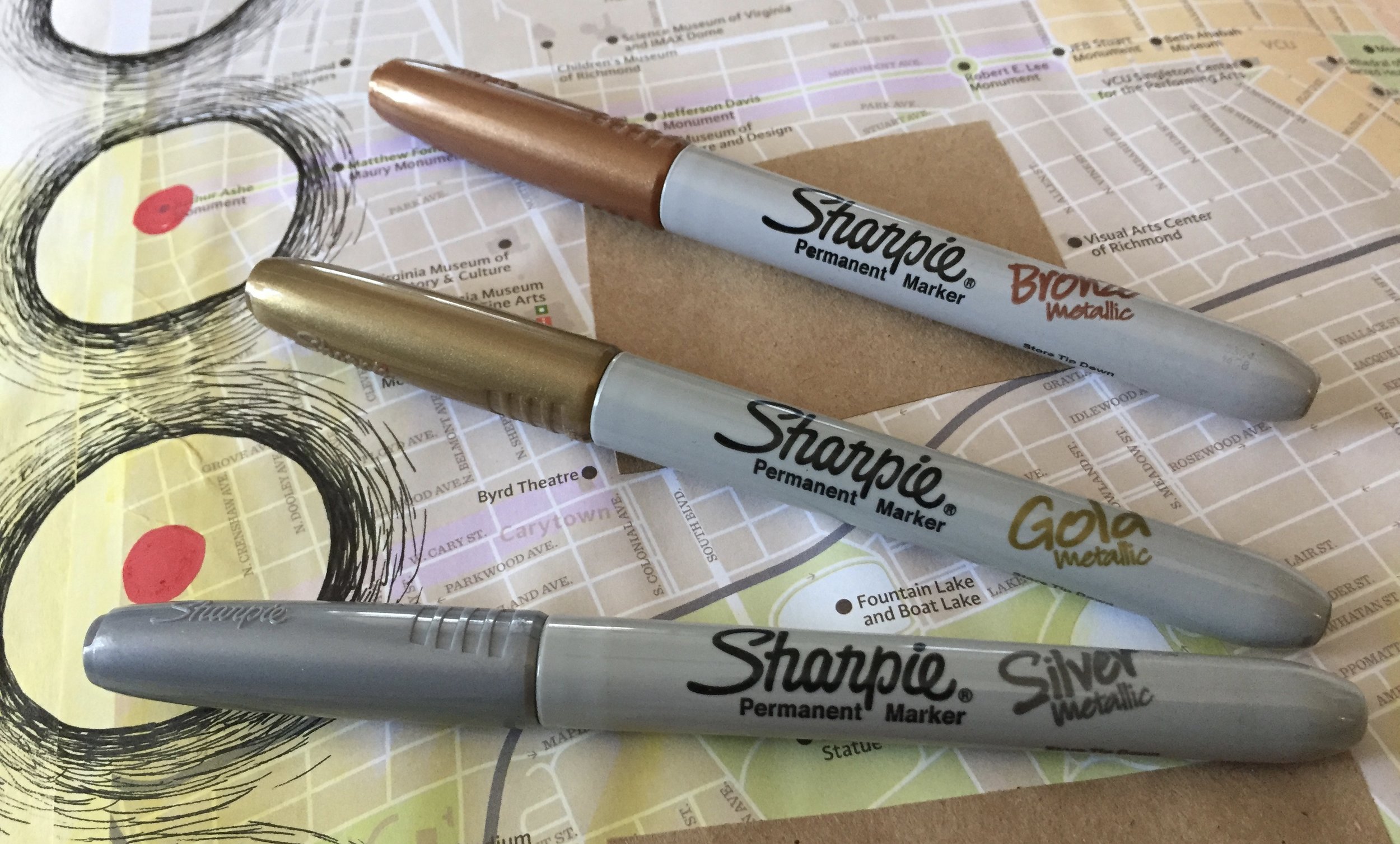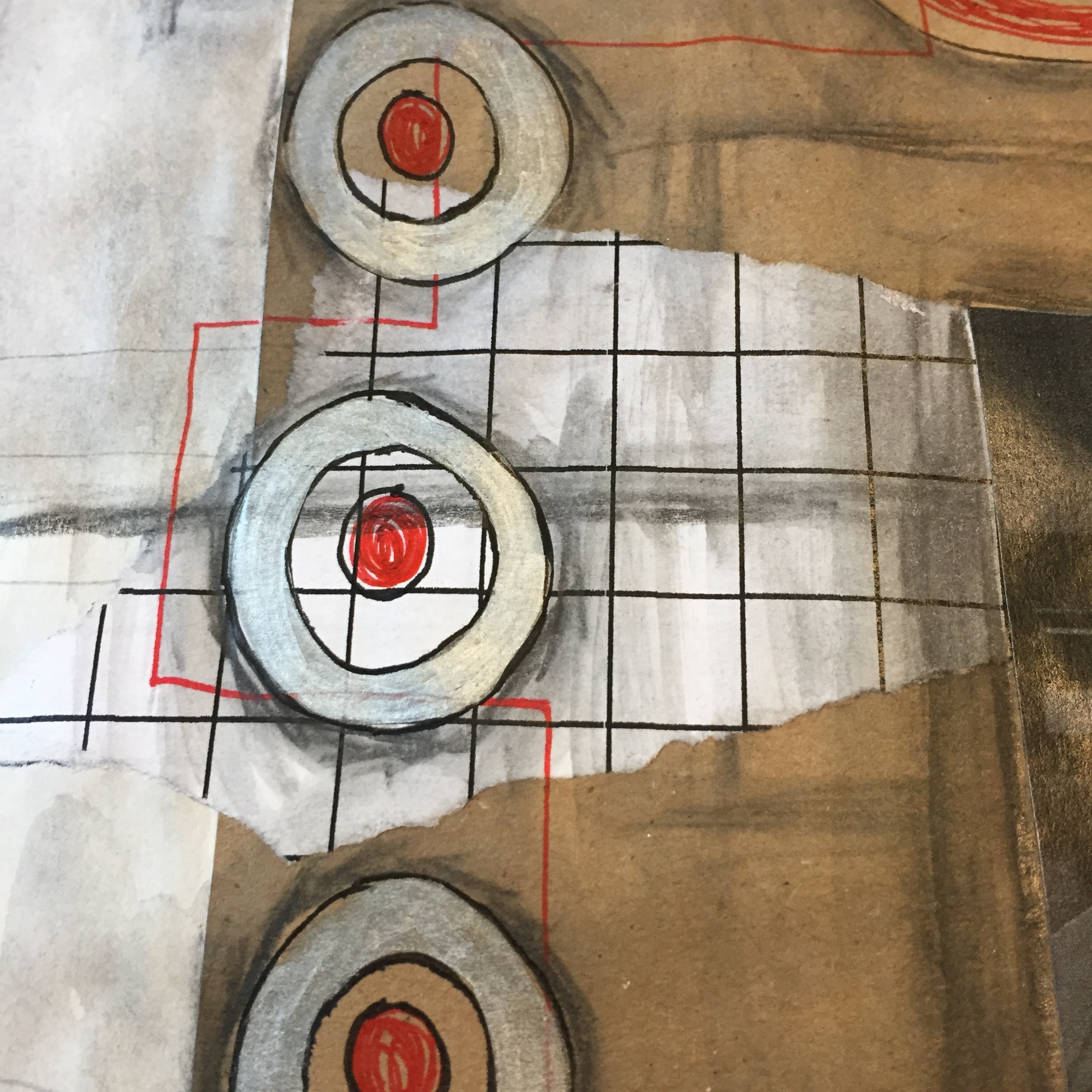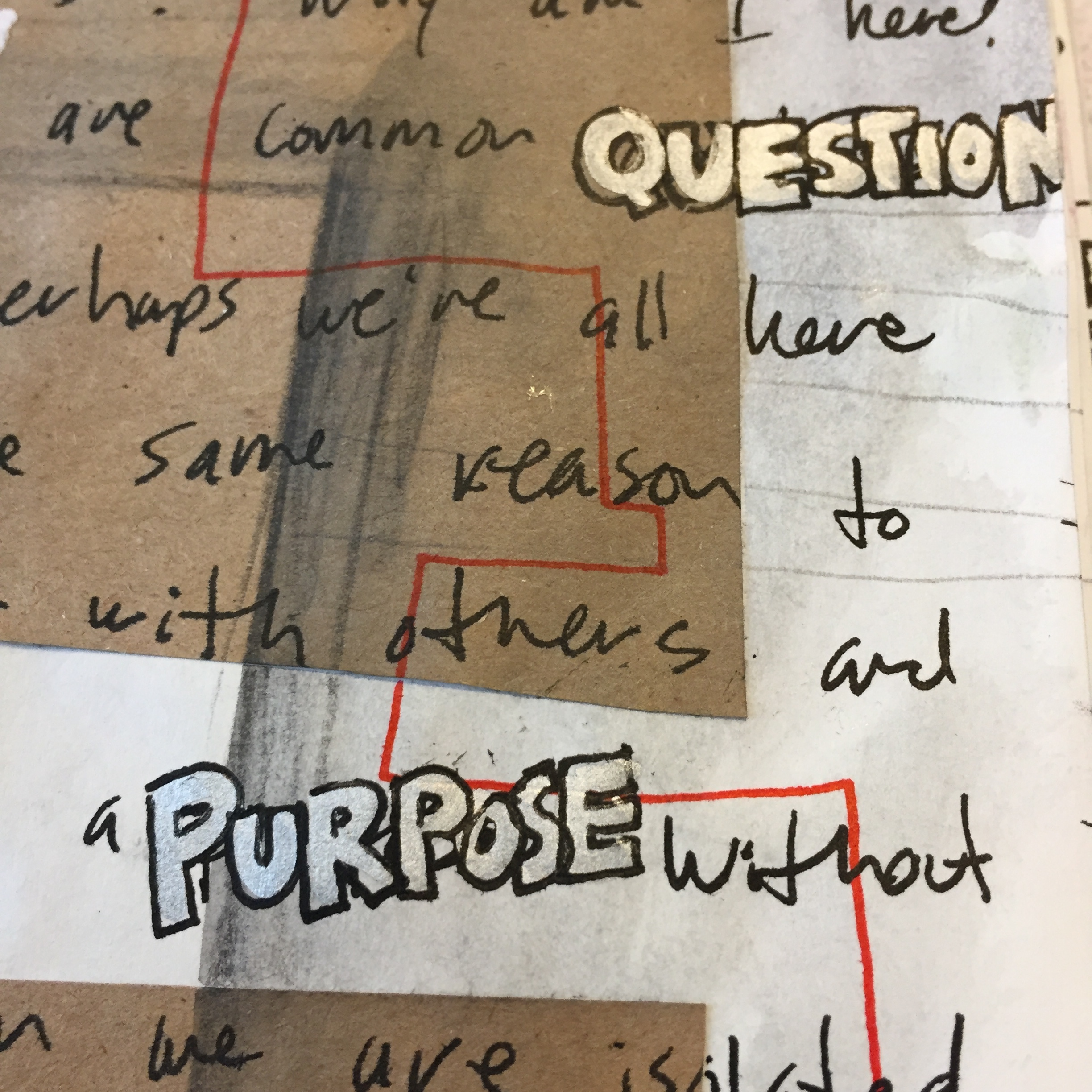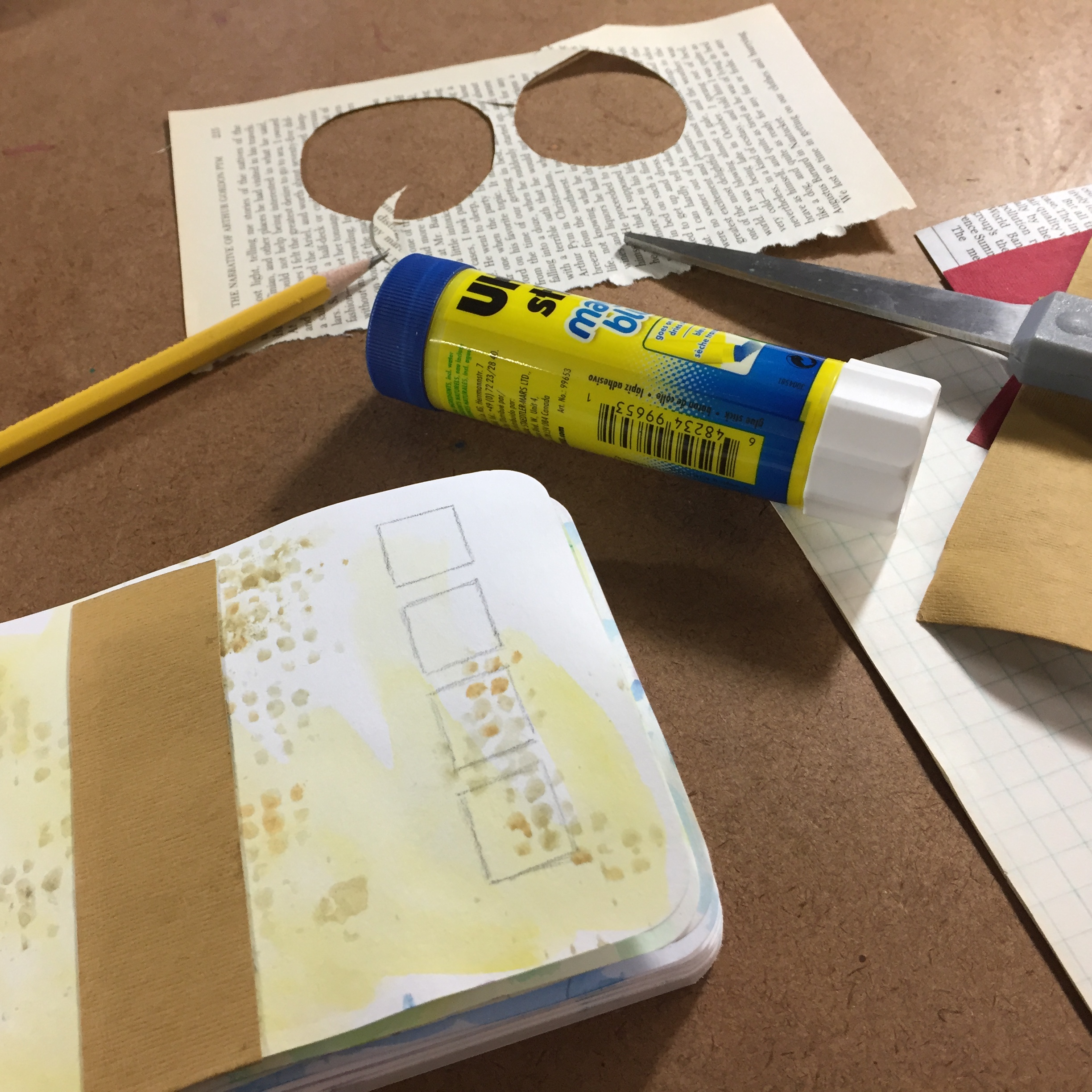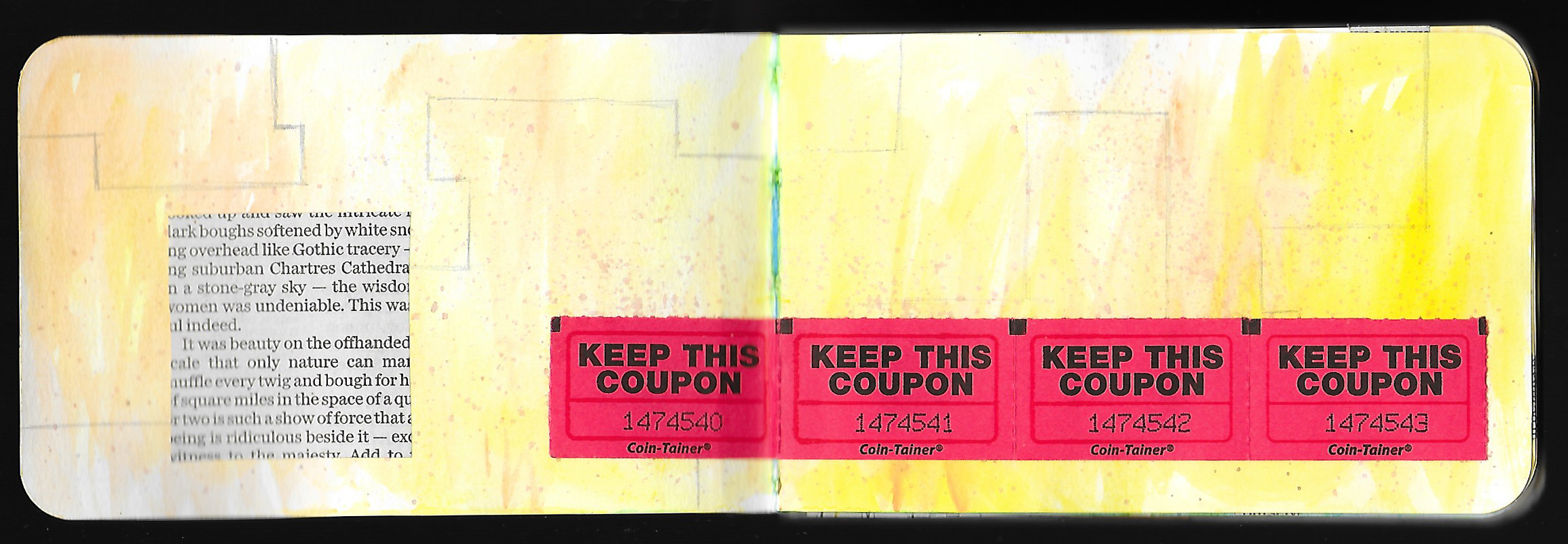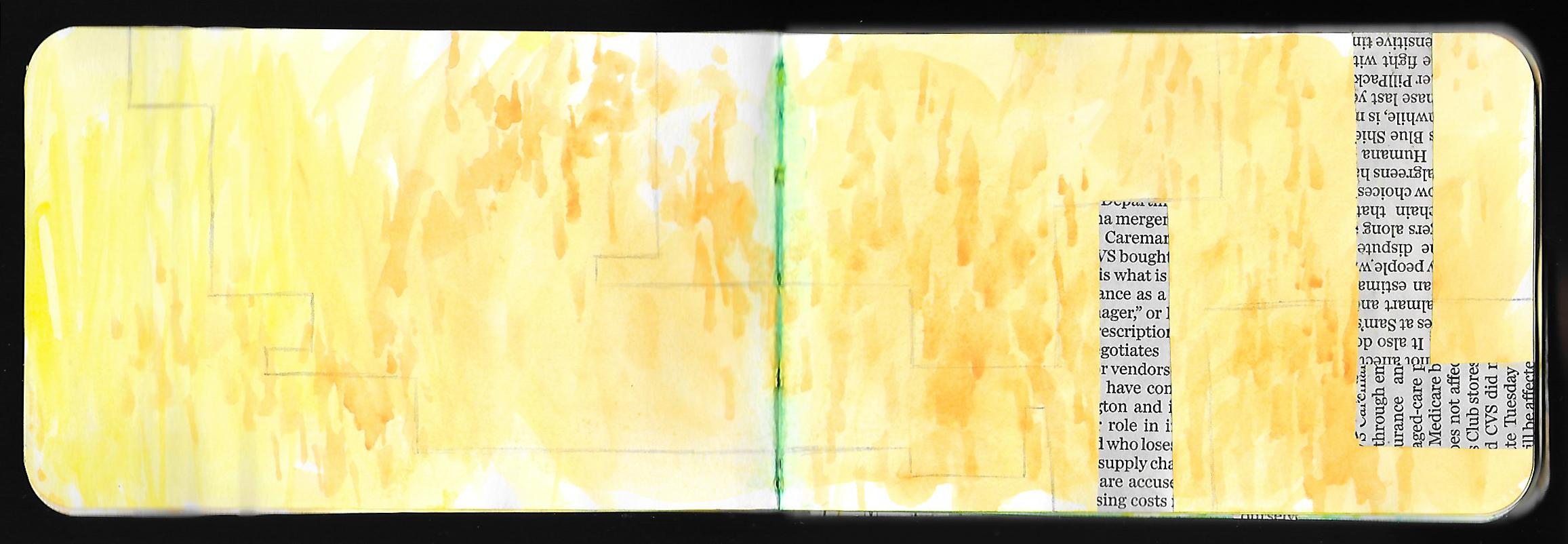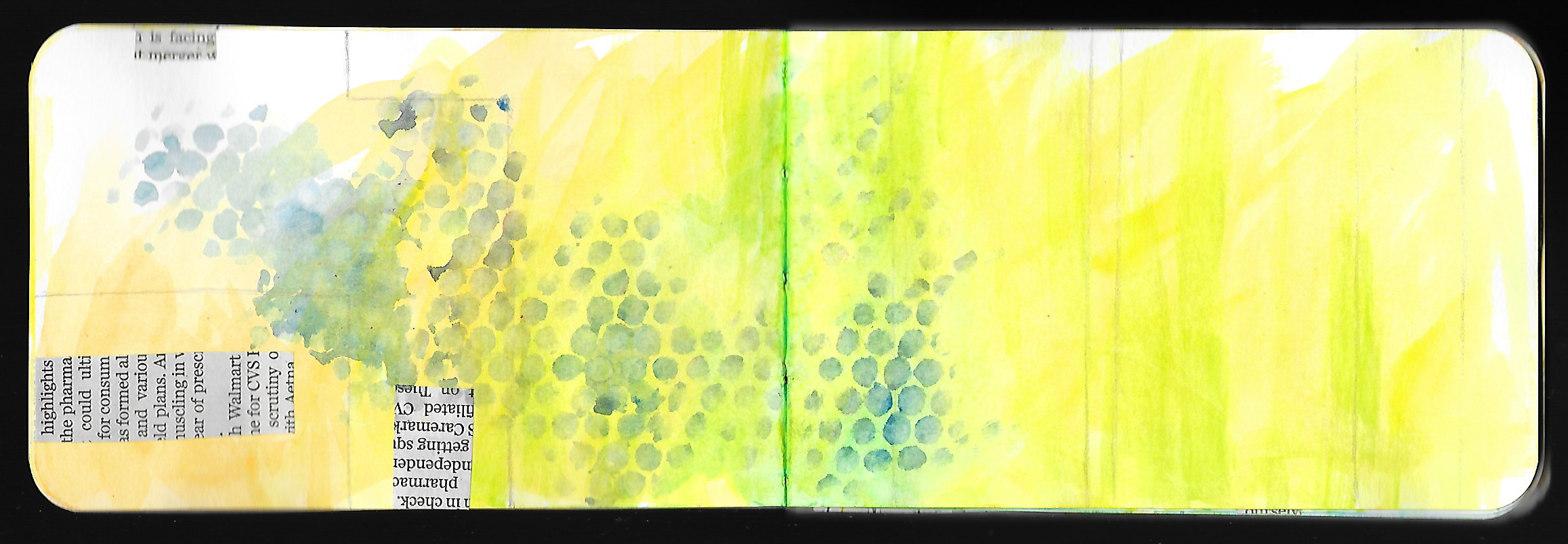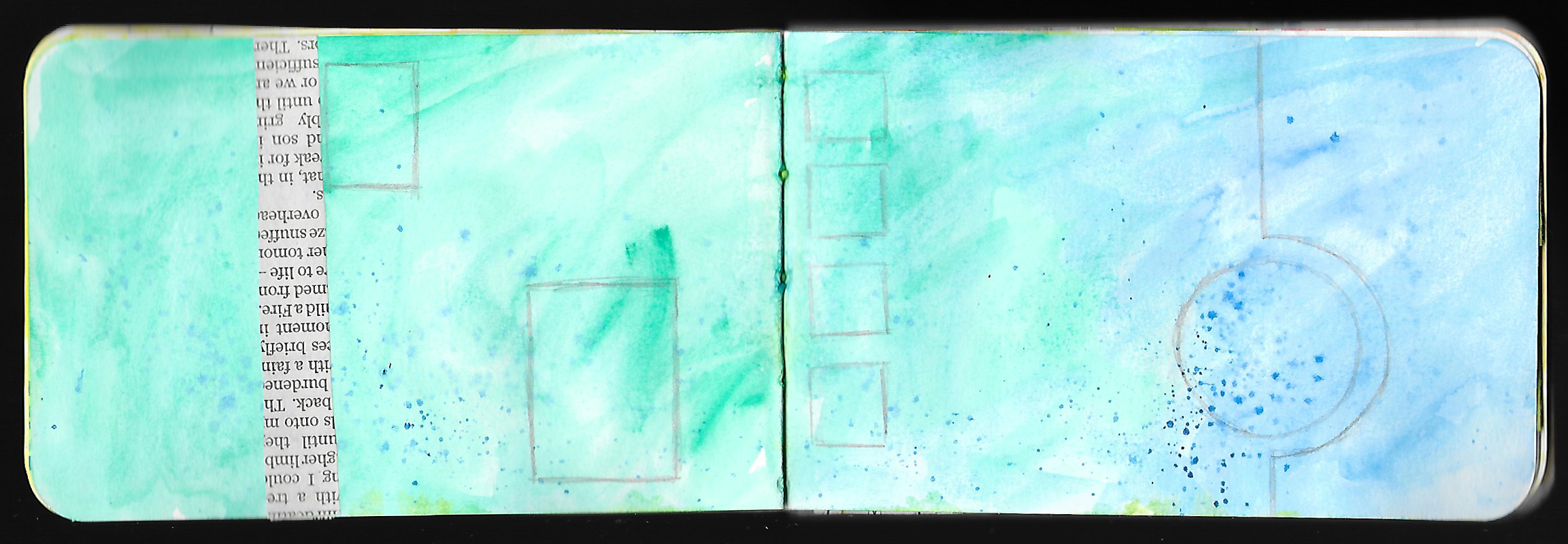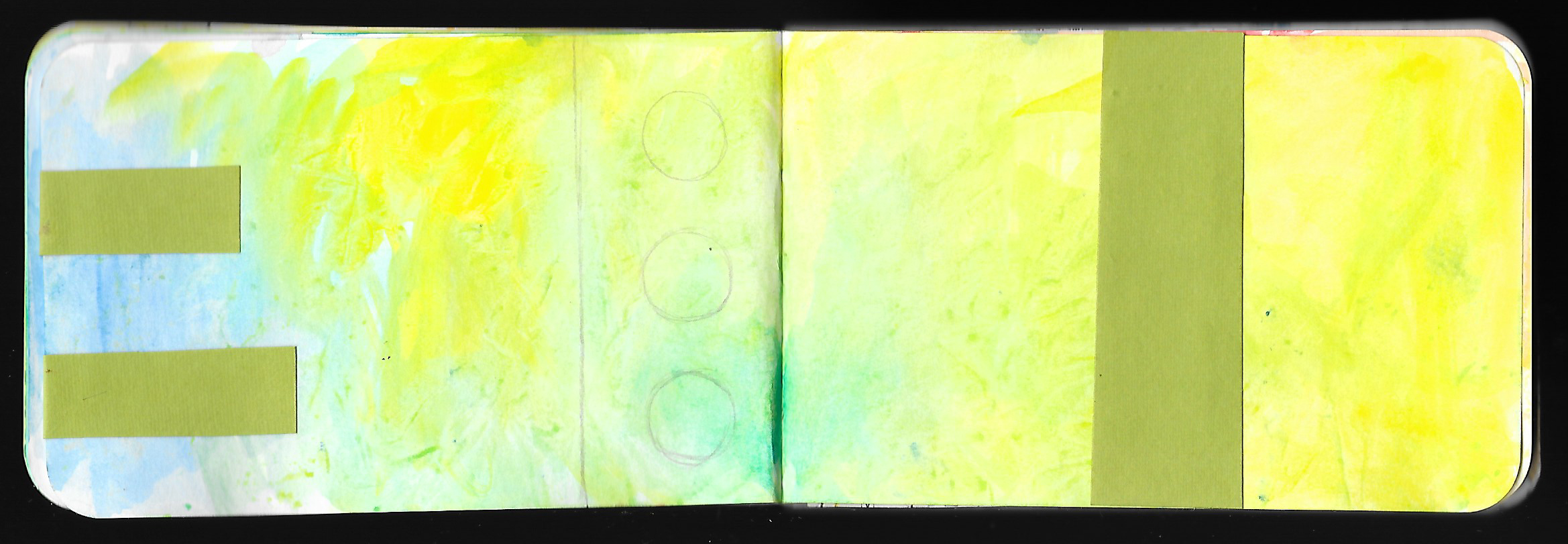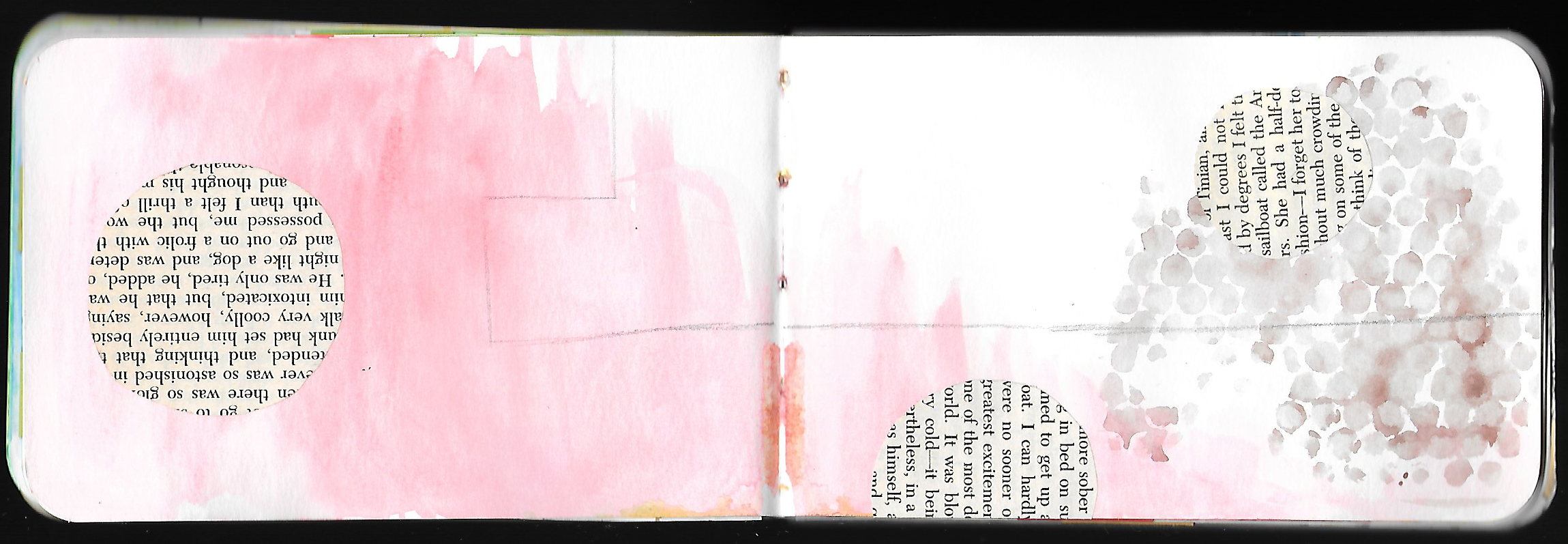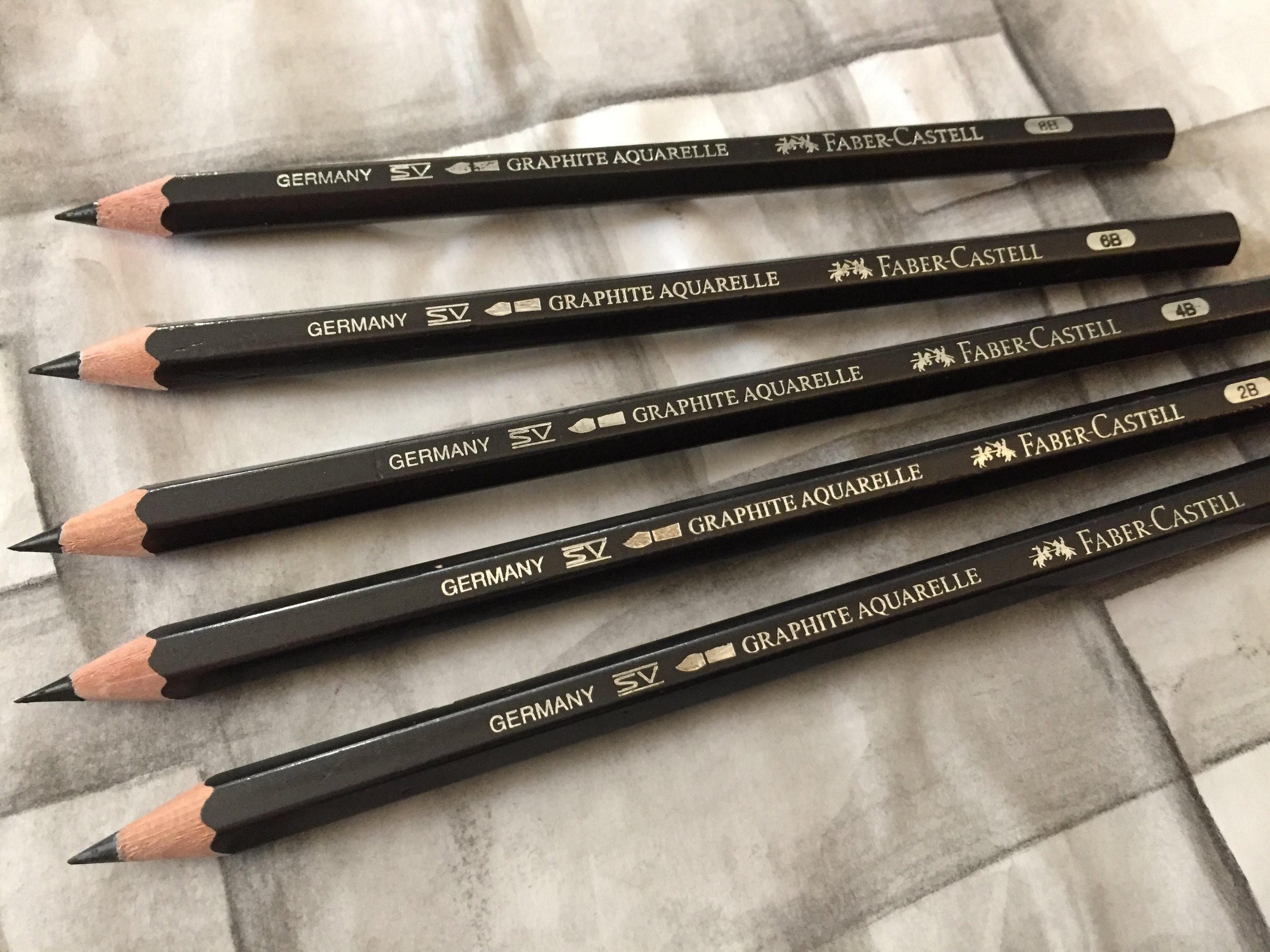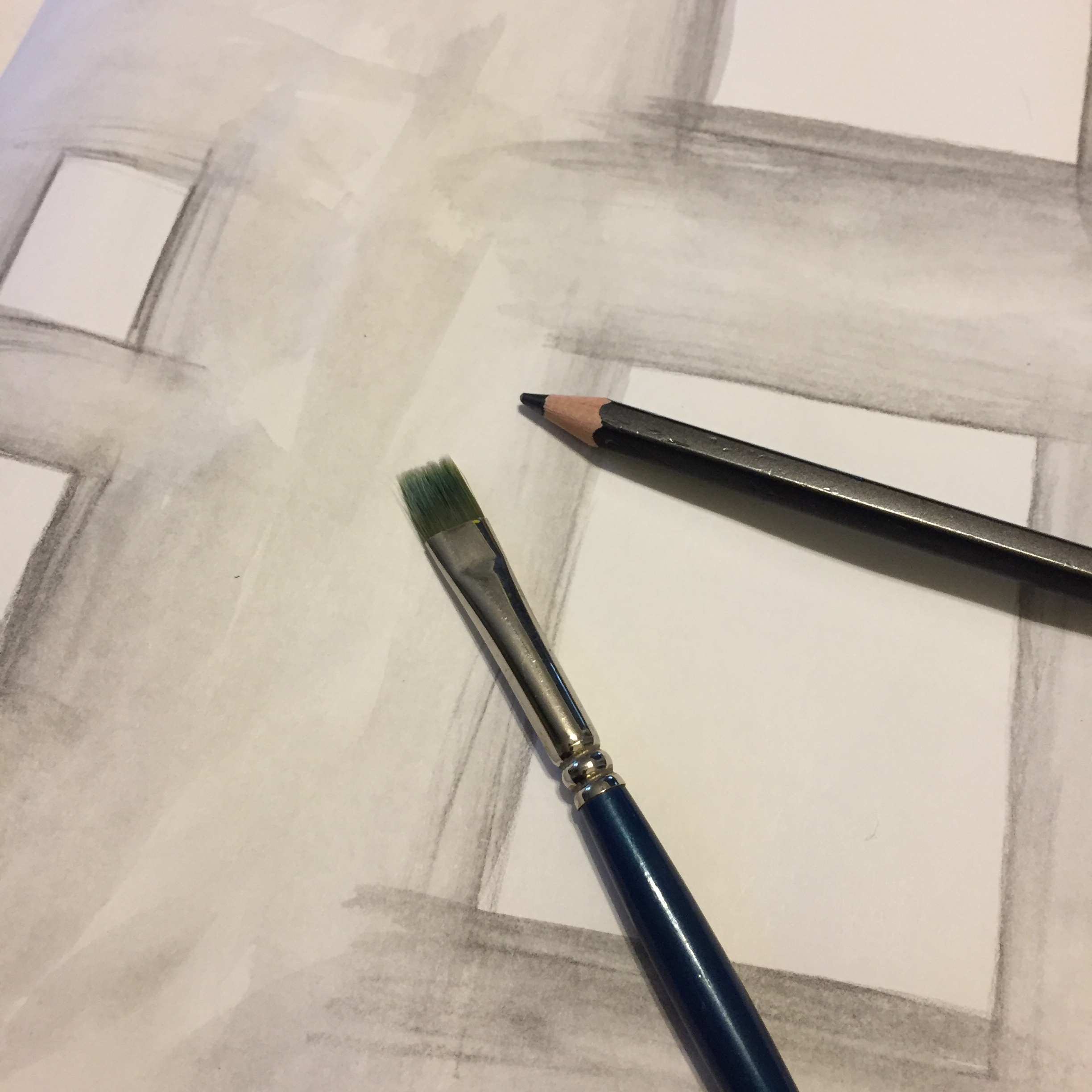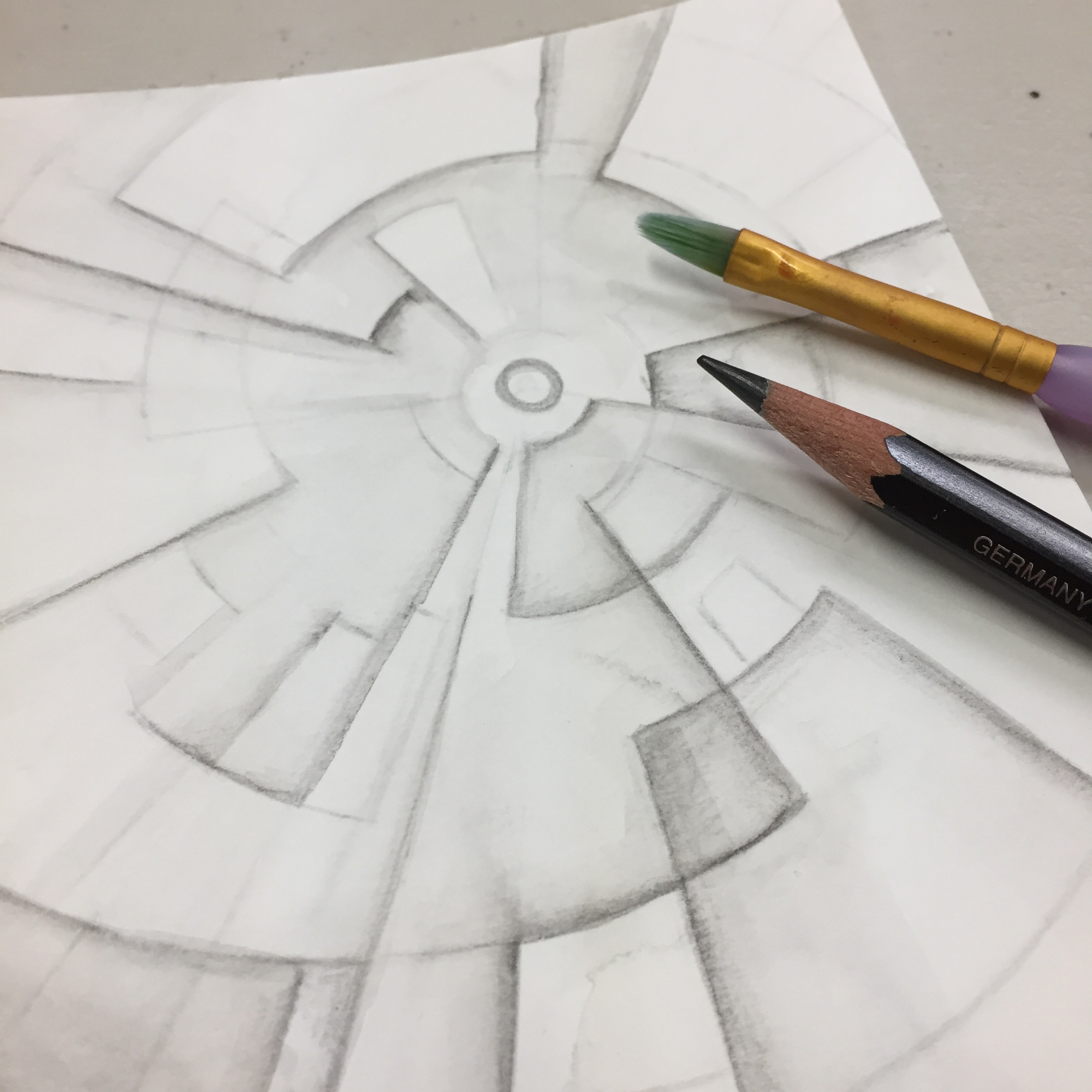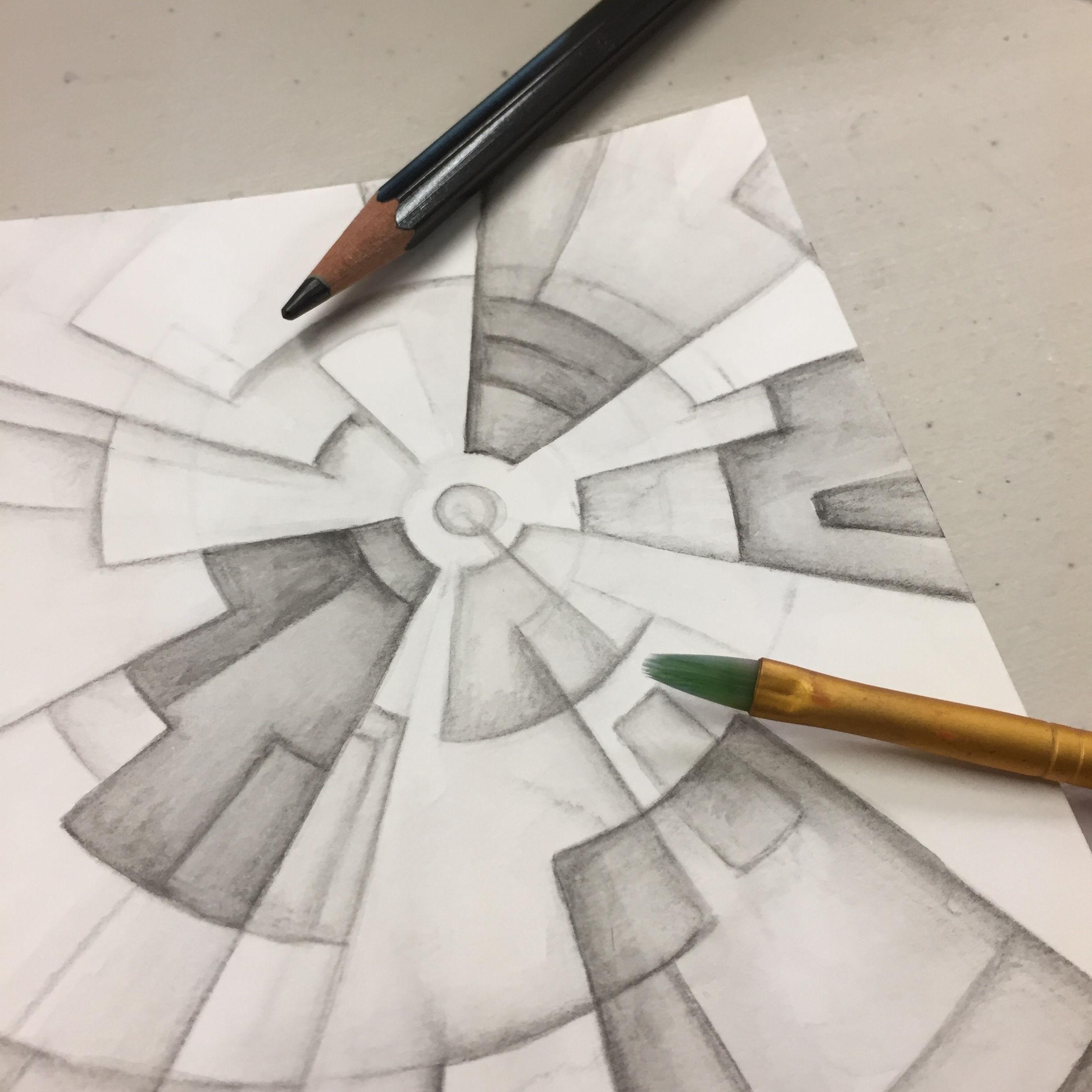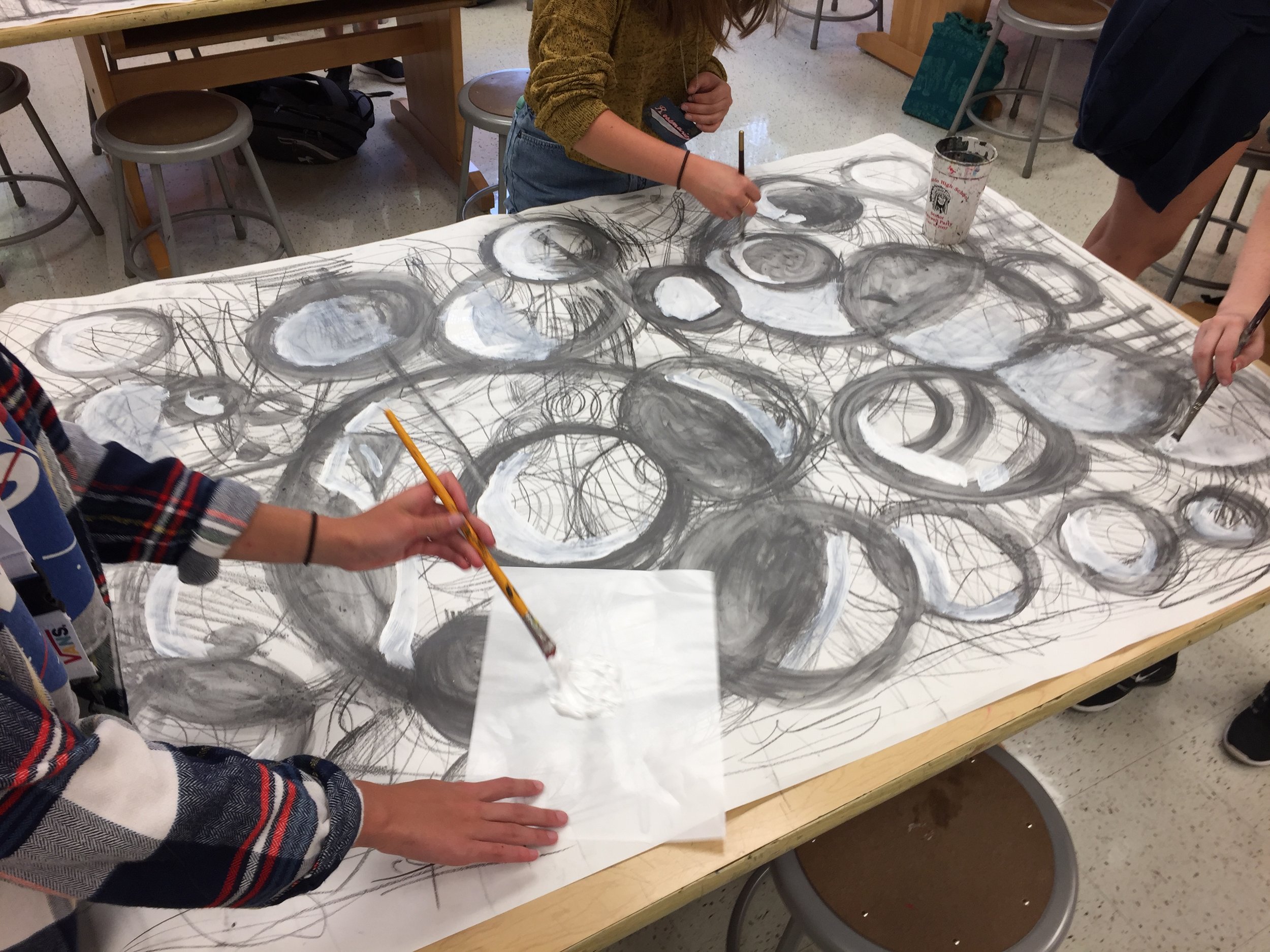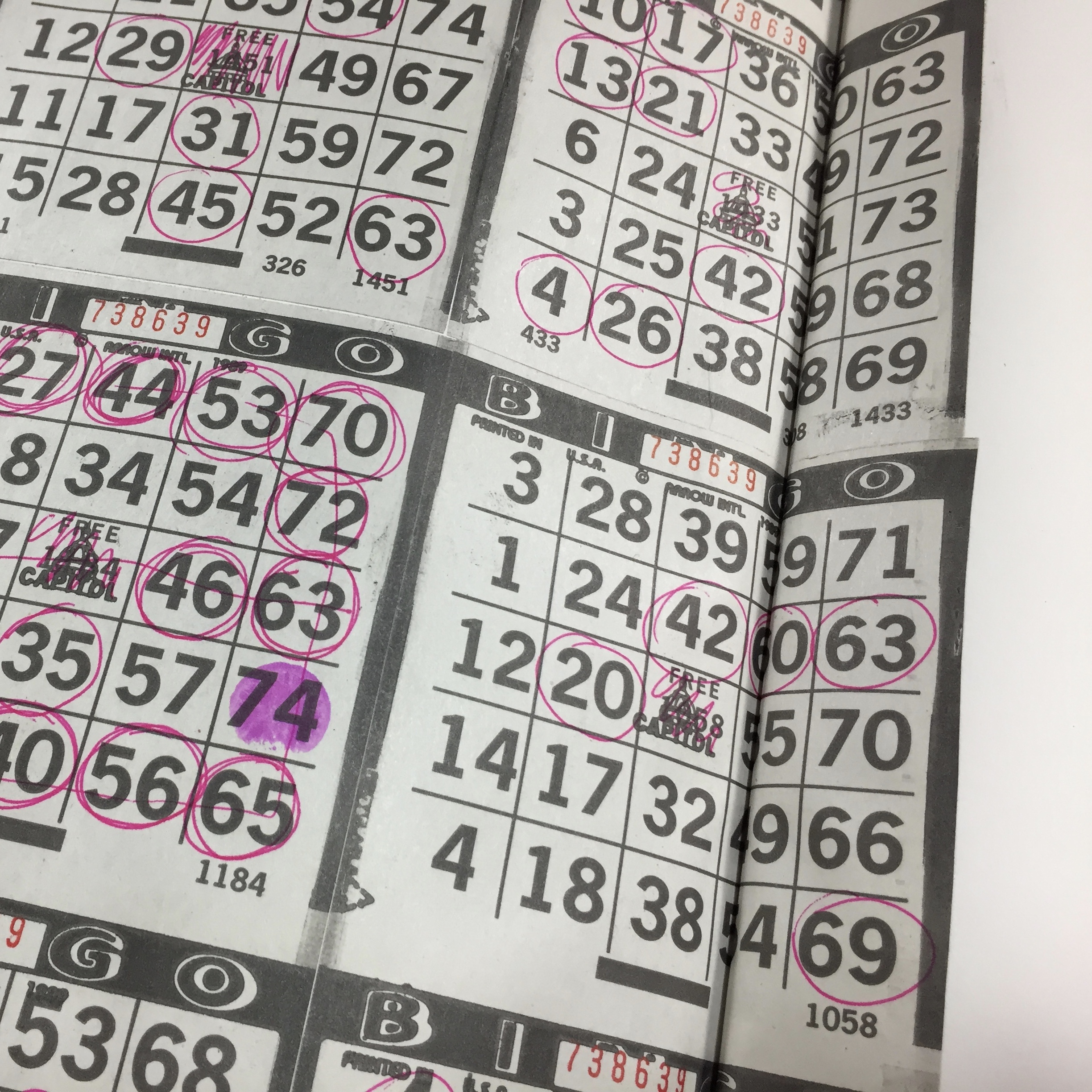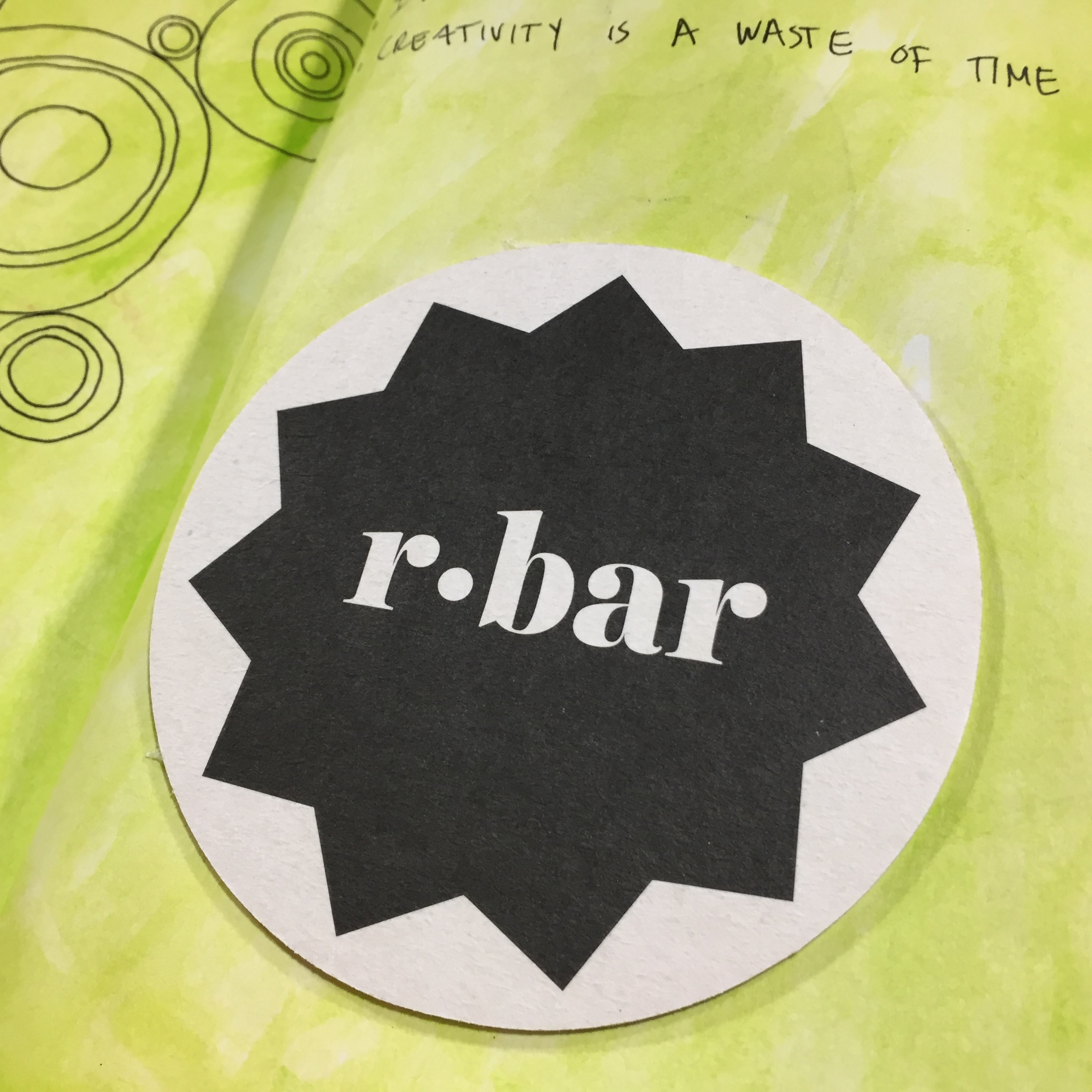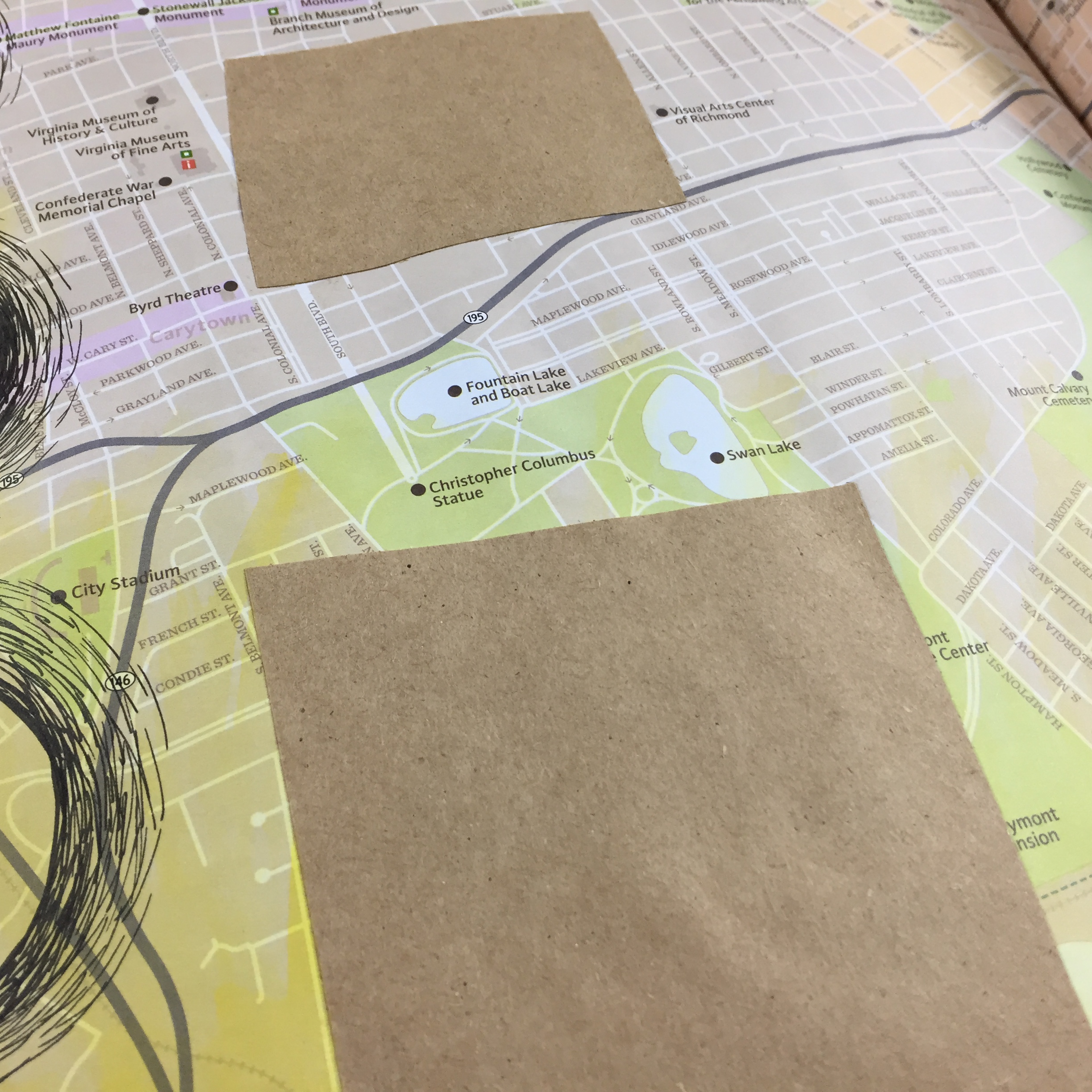The fourth lesson of the Creative Prayer Book is a quick lesson about using ink to add another layer or two to my pages. I turn to my favorite ink pens — my uni-ball Vision pens, and I make certain that they are waterproof. Since I may want to paint or use a wet material in a future lesson, I want to minimize bleeding. The ink may bleed and blend a little if I paint over it, but not a lot. I use the pens in three main ways — to connect pages, to create structure, and to add texture.
Connection
One of my goals with the Creative Prayer Book is to try to make it so that the pages feel connected, so I’ve been trying to make sure that colors, lines, and textures flow and repeat from page to page. I do the same with ink. I draw lines that act like threads that bridge and tie pages together. Two-page spreads are easy to connect, but in order to tie back-to-back pages together, I wrap the lines around the edge of the page so that they continue from one page to another. By extending these lines, I can tie together quite a few pages. Another way to connect pages is through repetition. By repeating lines, shapes, and textures, I can tie my pages together.
Structure
Another way that I use the ink pen is to draw lines and shapes to divide and break up the space of some of my pages. I use a lot of rectangles, squares, and straight lines to create structure and to create interesting spaces within my pages. I use big and little shapes to have some variety, and I thicken some of the lines so that they stand out. Some of the shapes might be filled in later with images and drawings, and others will be left as generic structural elements.
Texture
In the previous lesson, I used watercolor pencil to add texture to some of my pages, and I want to reinforce that with ink, so I use some of the punchinella, plastic mesh, and circle templates to trace patterns on some of my pages. This repeats some of the elements that I’ve already used, and creates some additional visual interest. The marks and shapes that I make are other small, and I try to spread them throughout my pages so that they don’t create too much emphasis.
With everything that I’ve done so far in my little book, I’ve been laying the foundation and slowly building layers. I’ve thought about what affirmations that I want to use, but I haven’t made any hard decisions about exactly which ones will go where. But I’m starting to think about it, and I’m looking forward to seeing how things will develop.
I hope that you’ll try experimenting a little with ink as you build in more layers into your book, and as always, Happy Creating!

